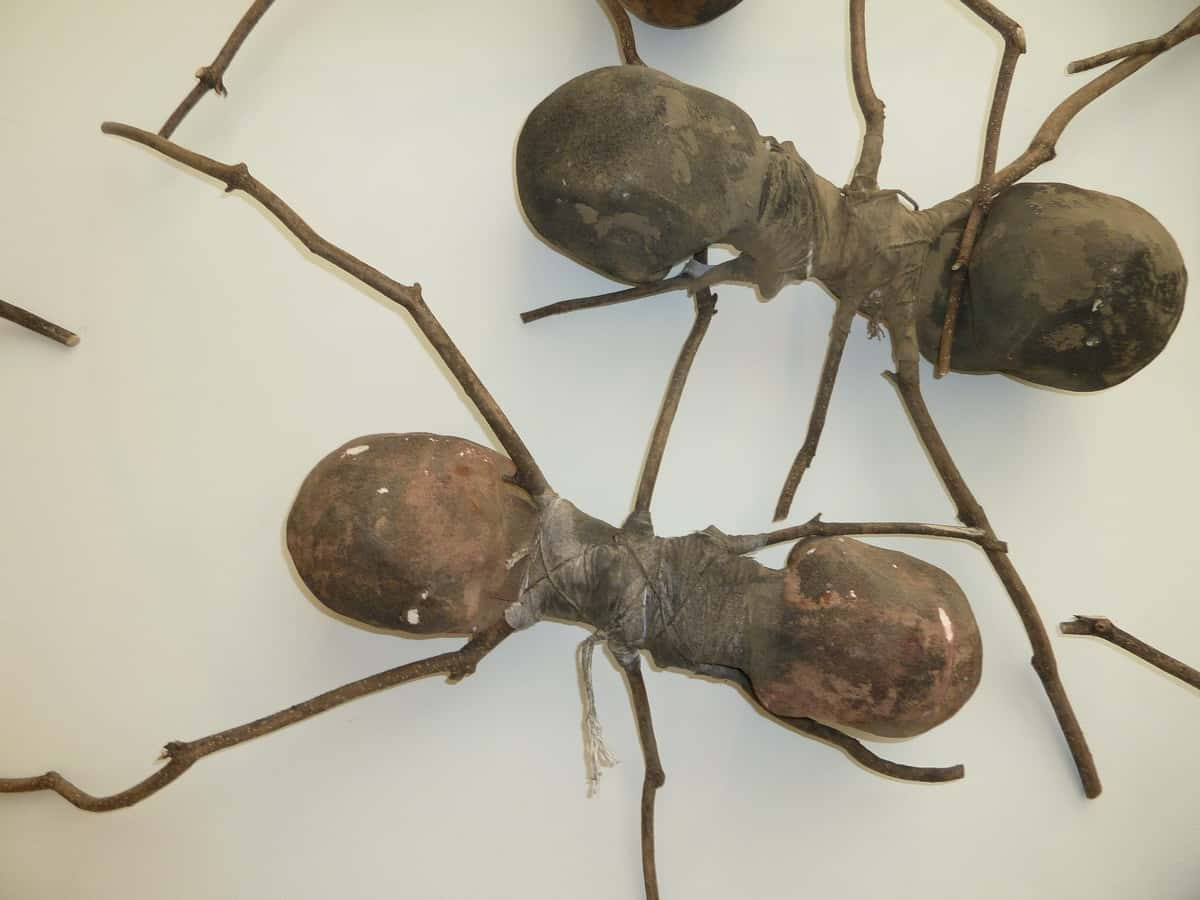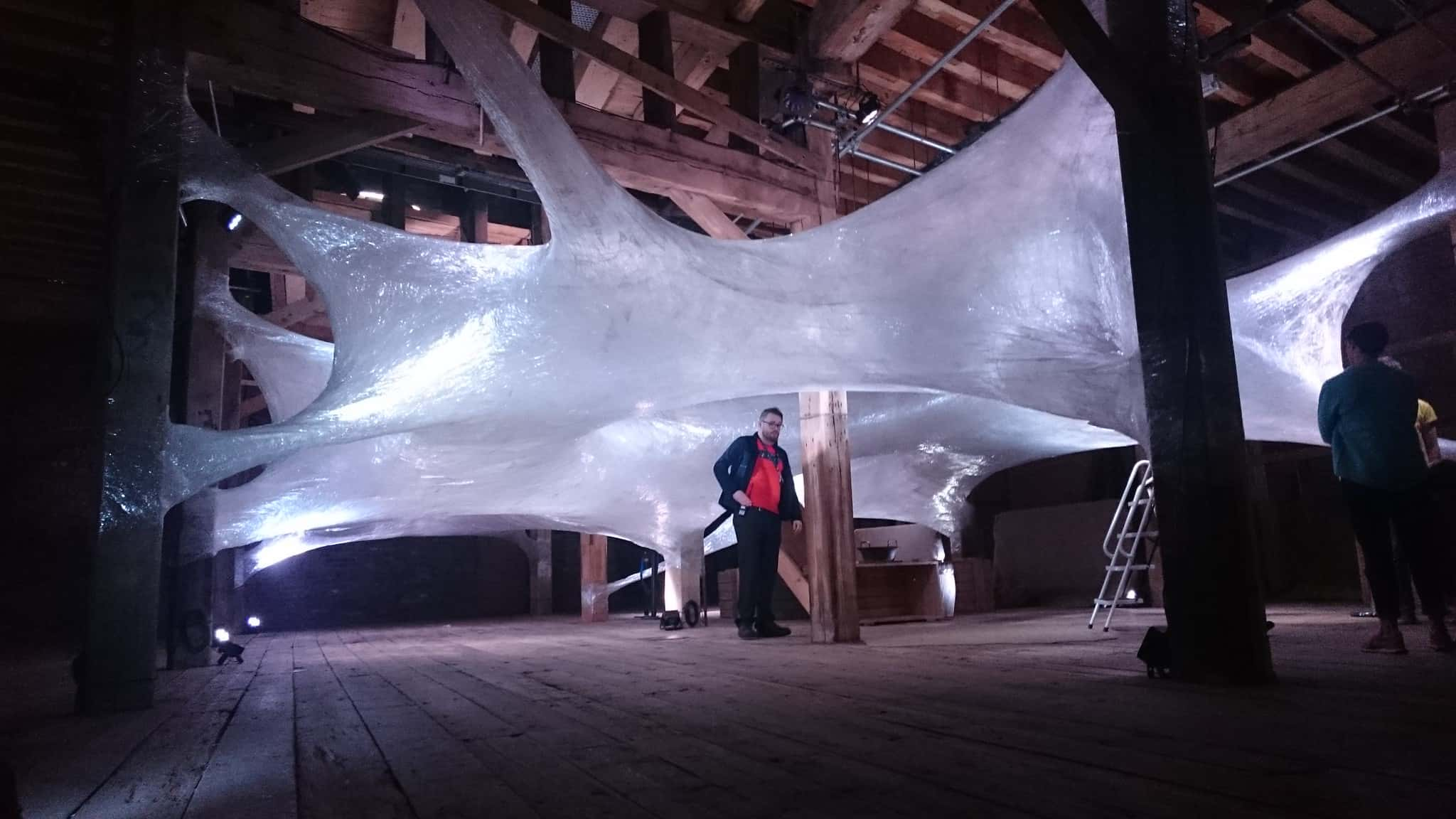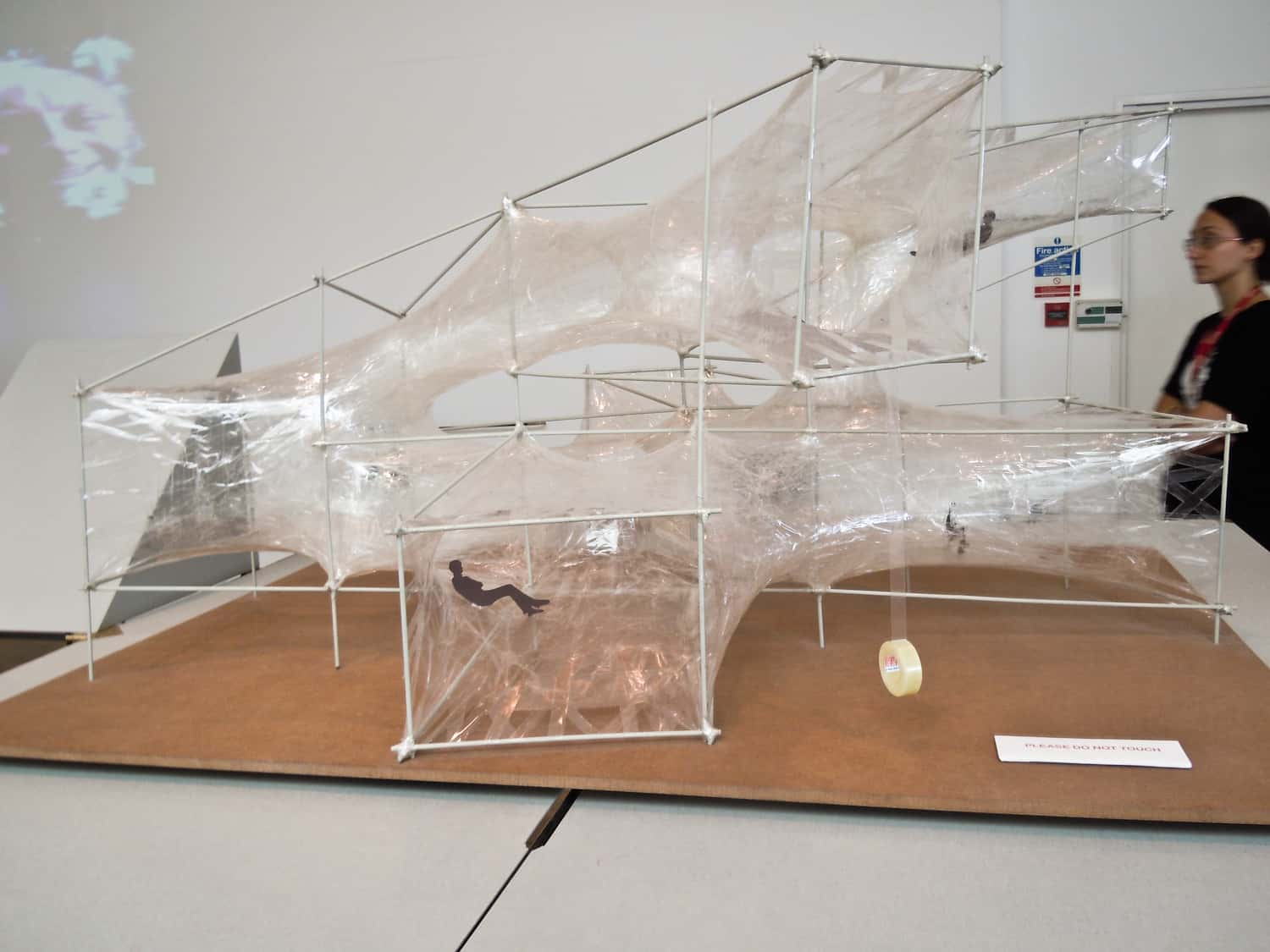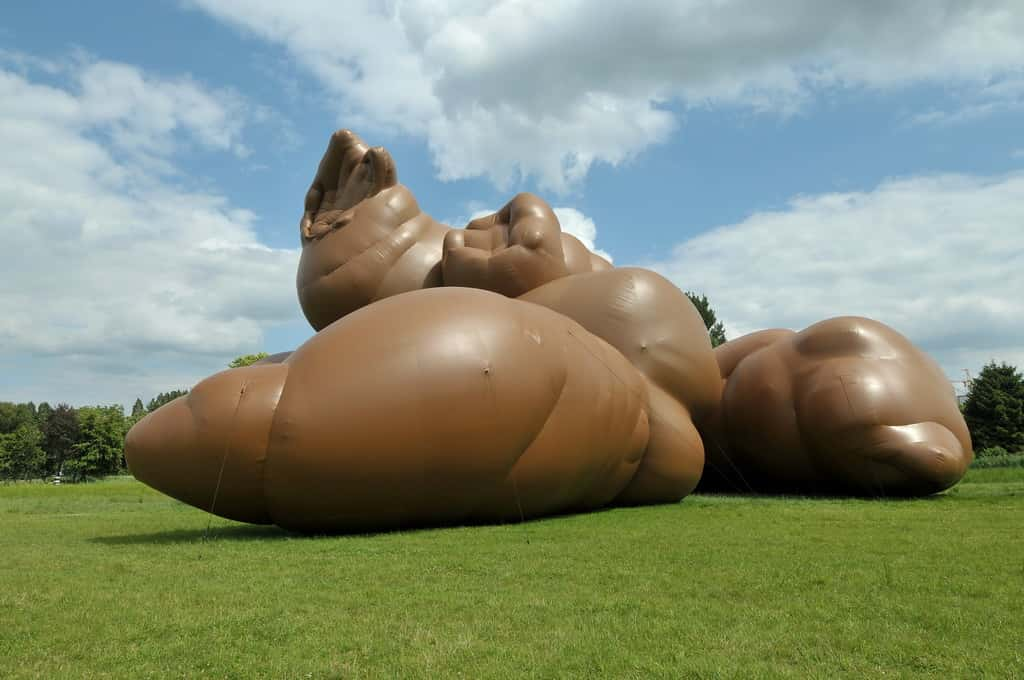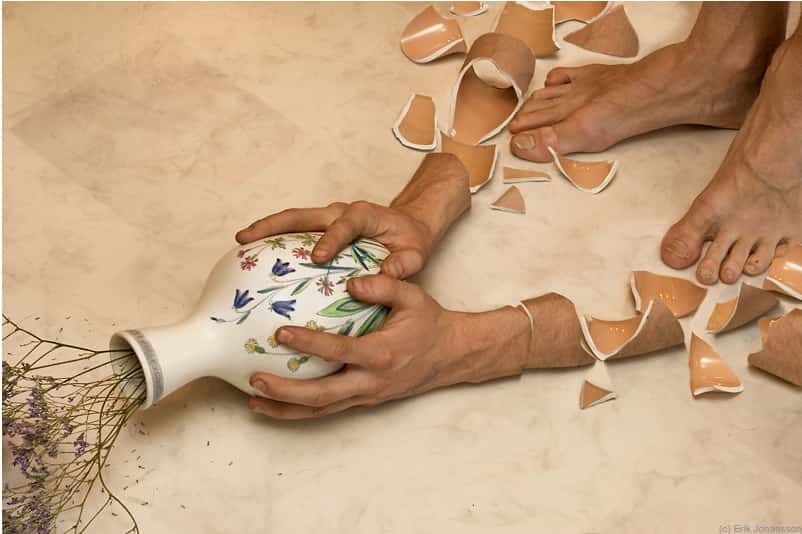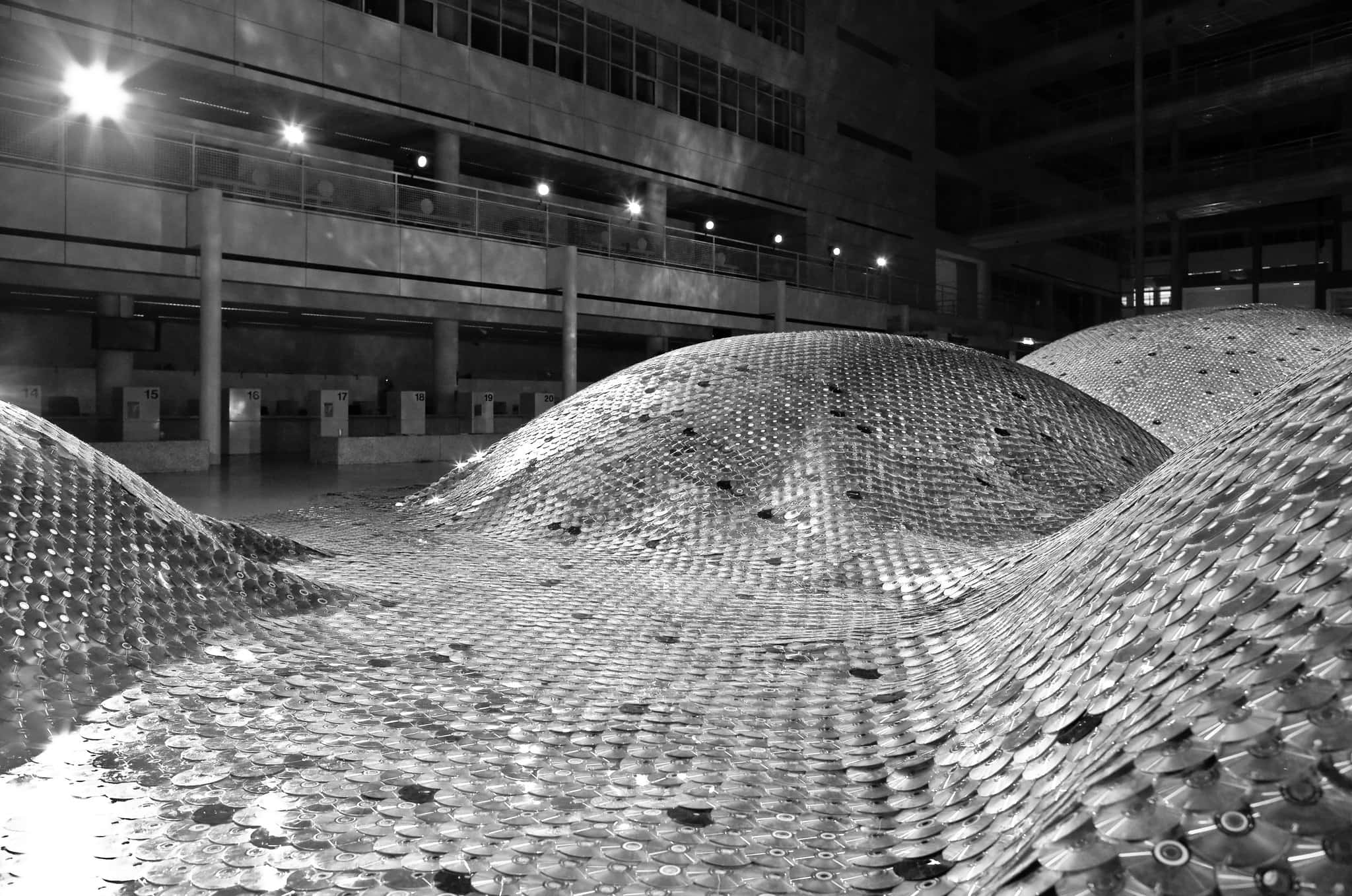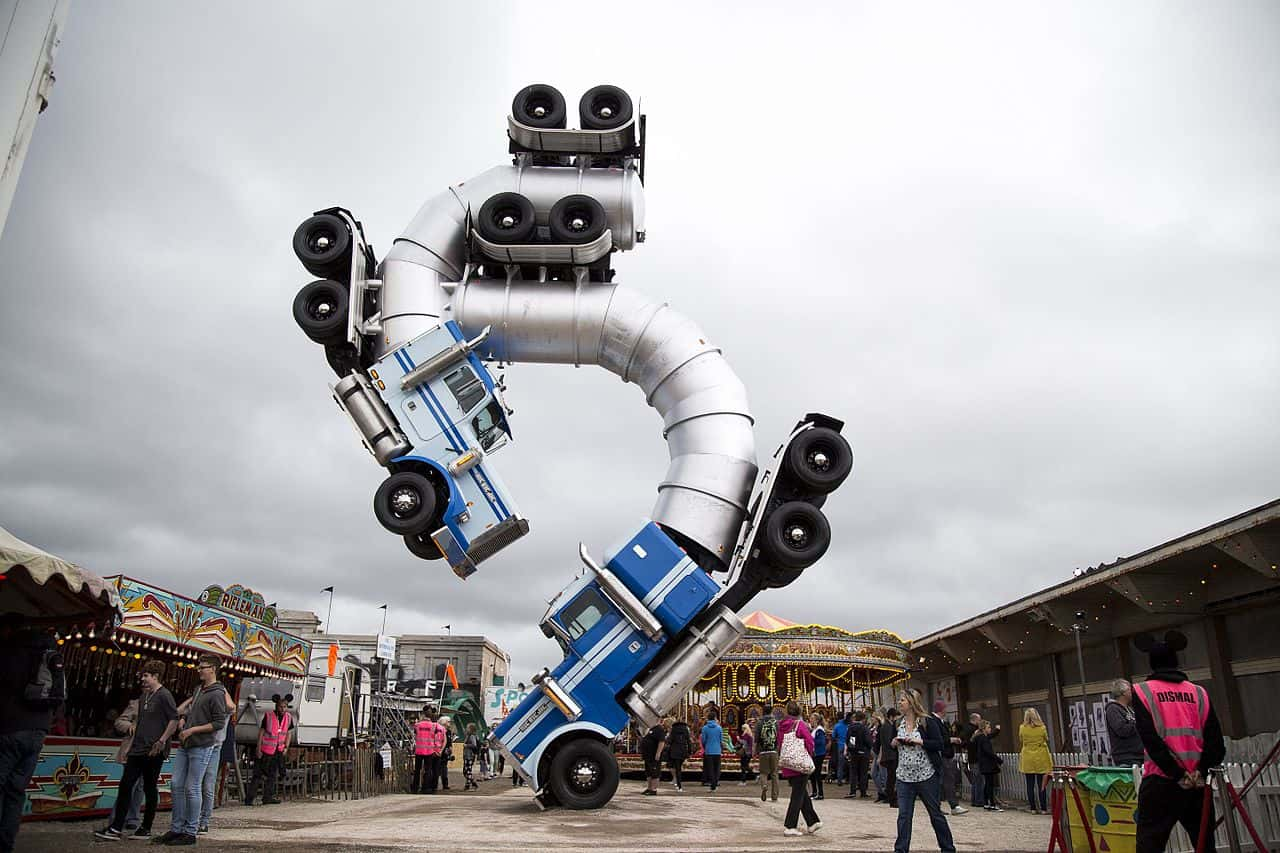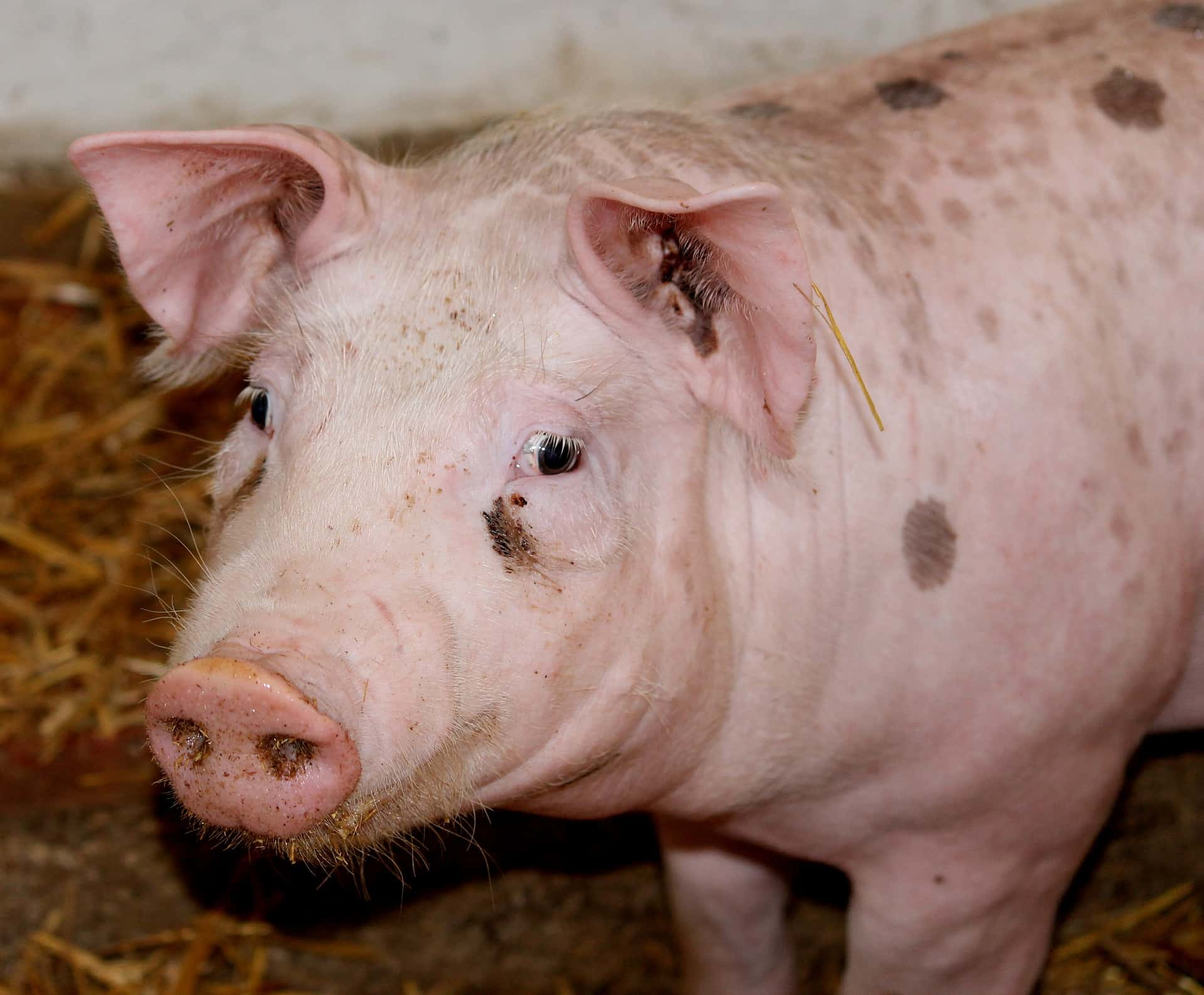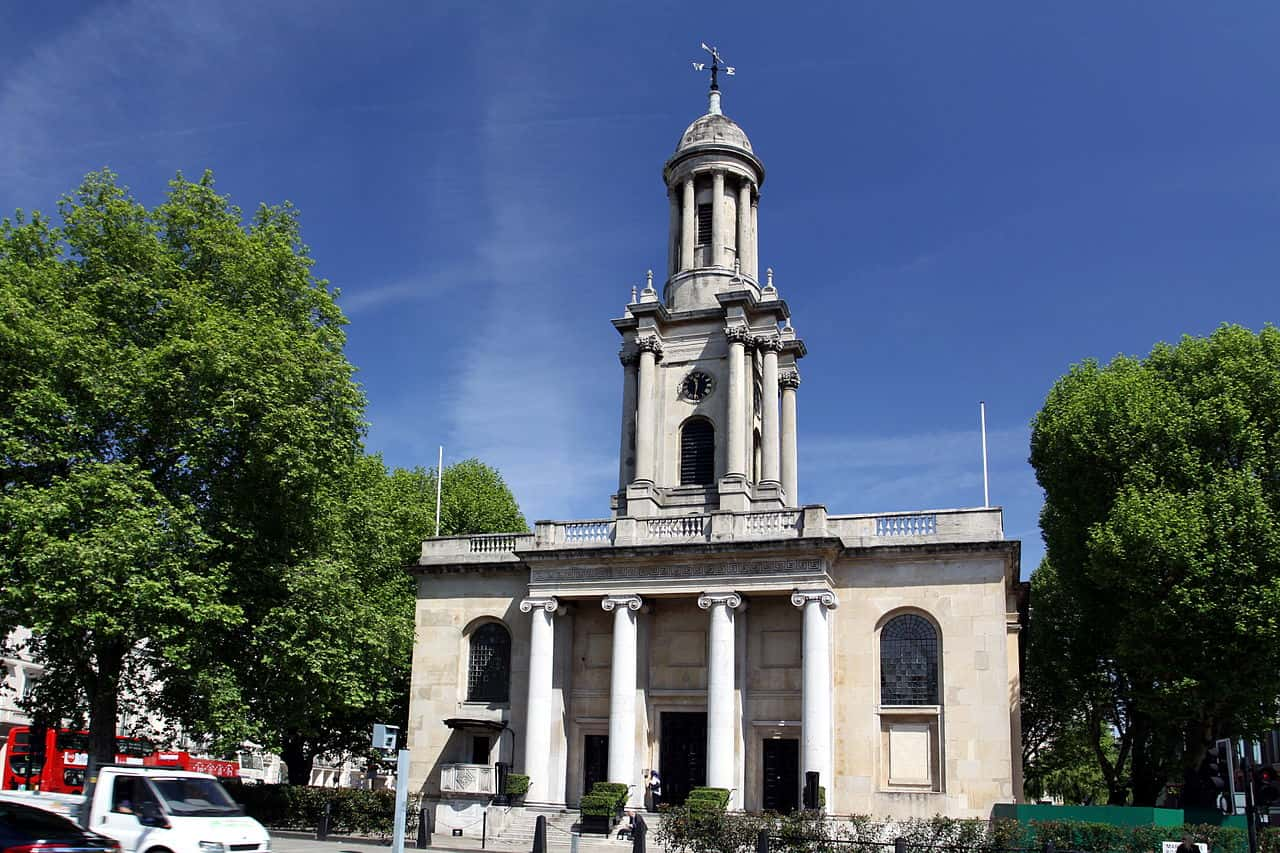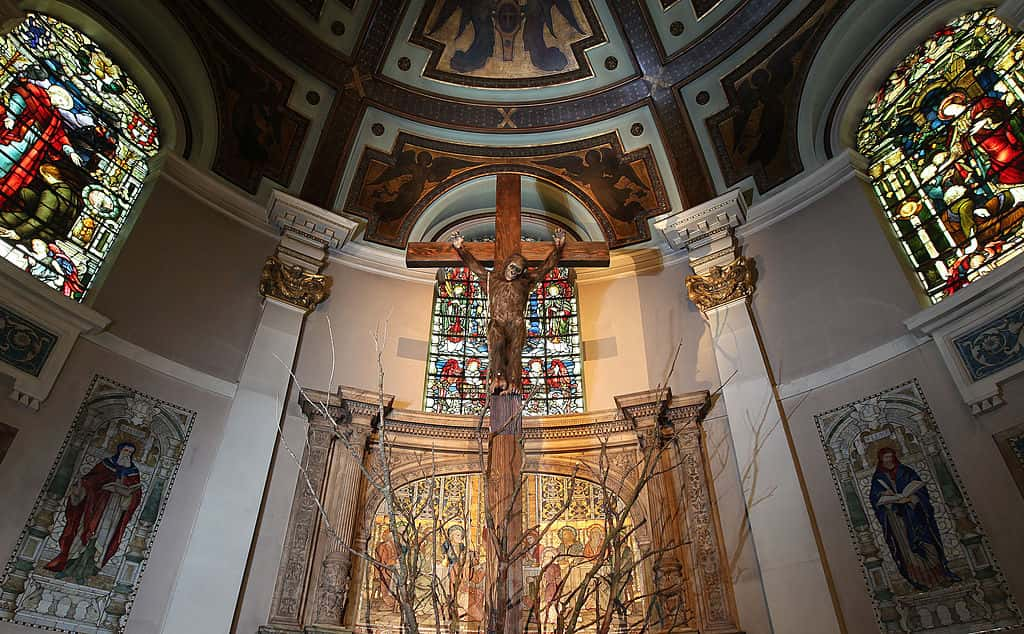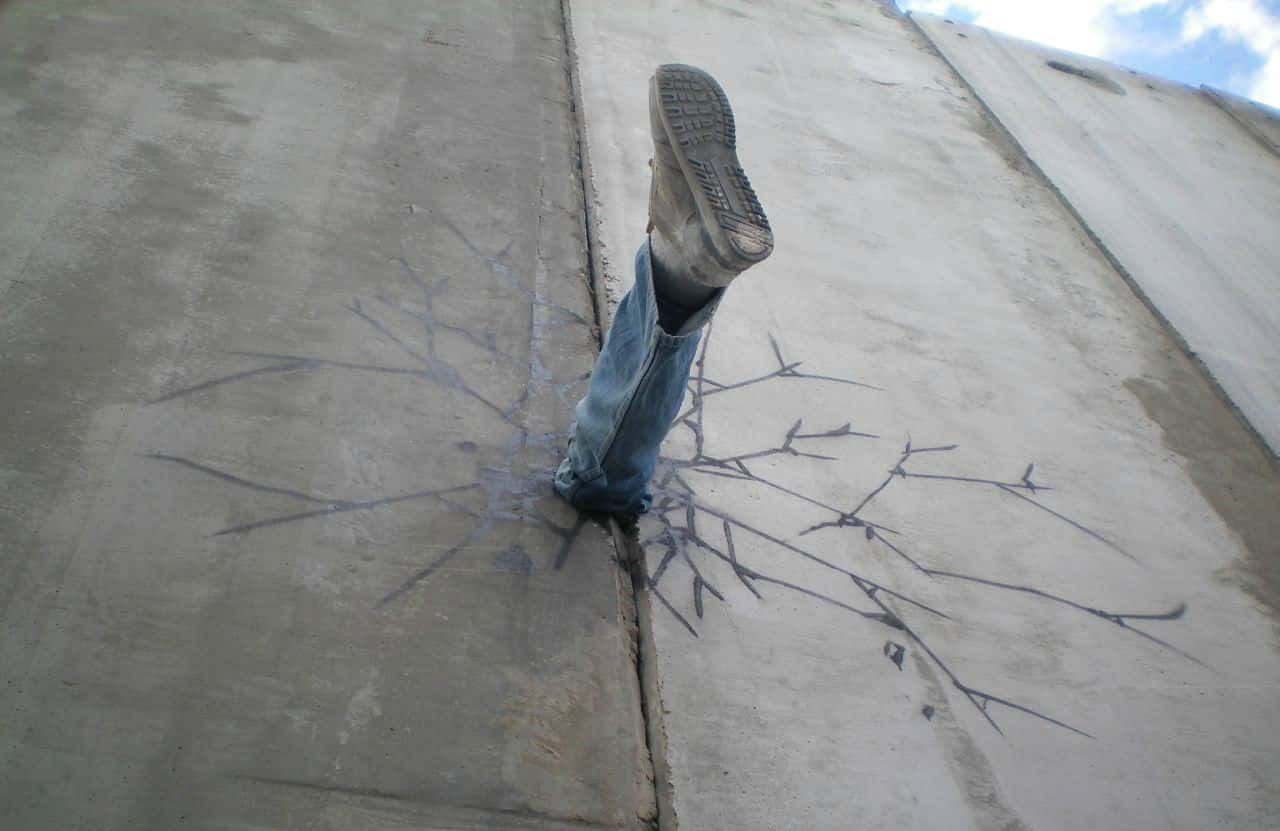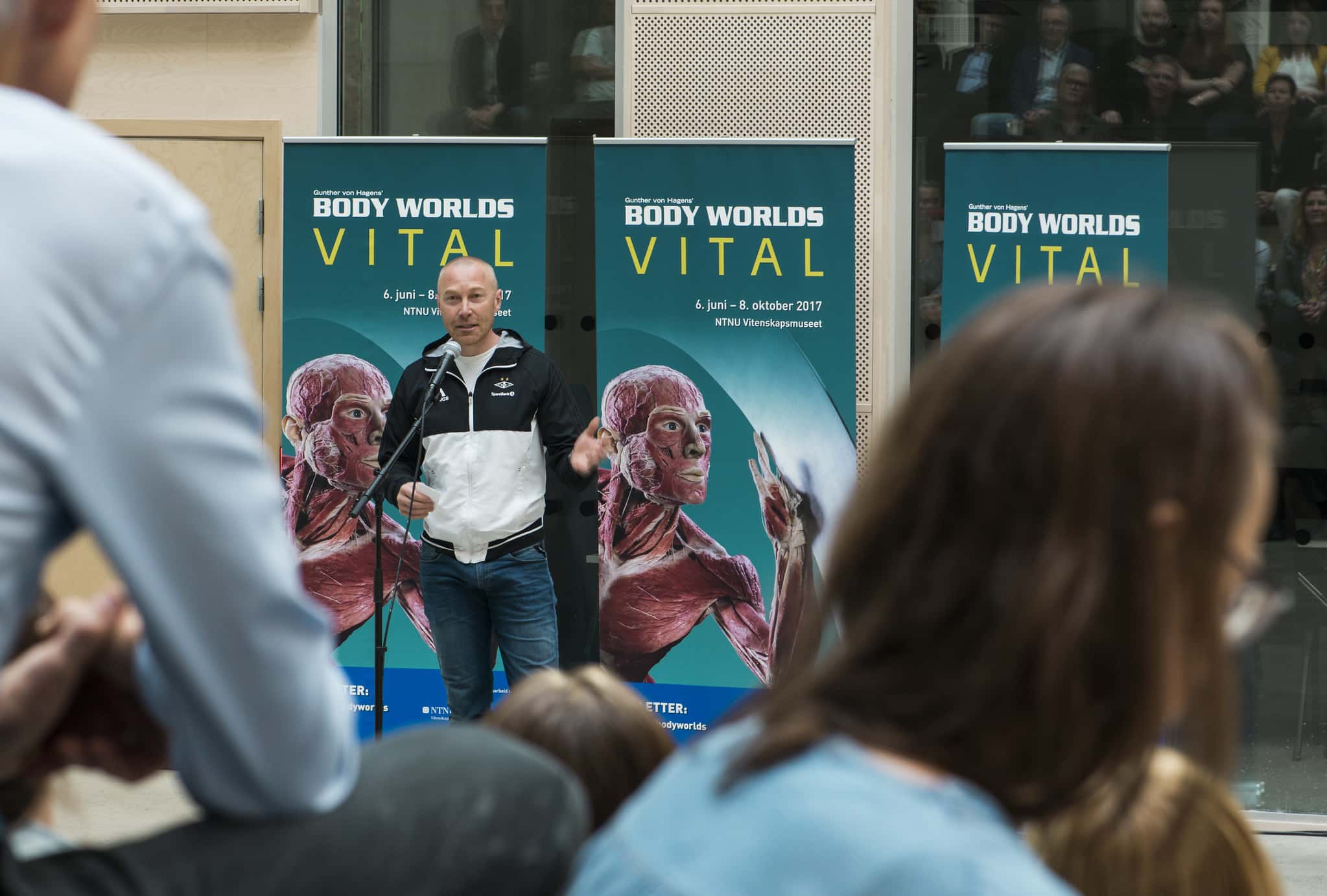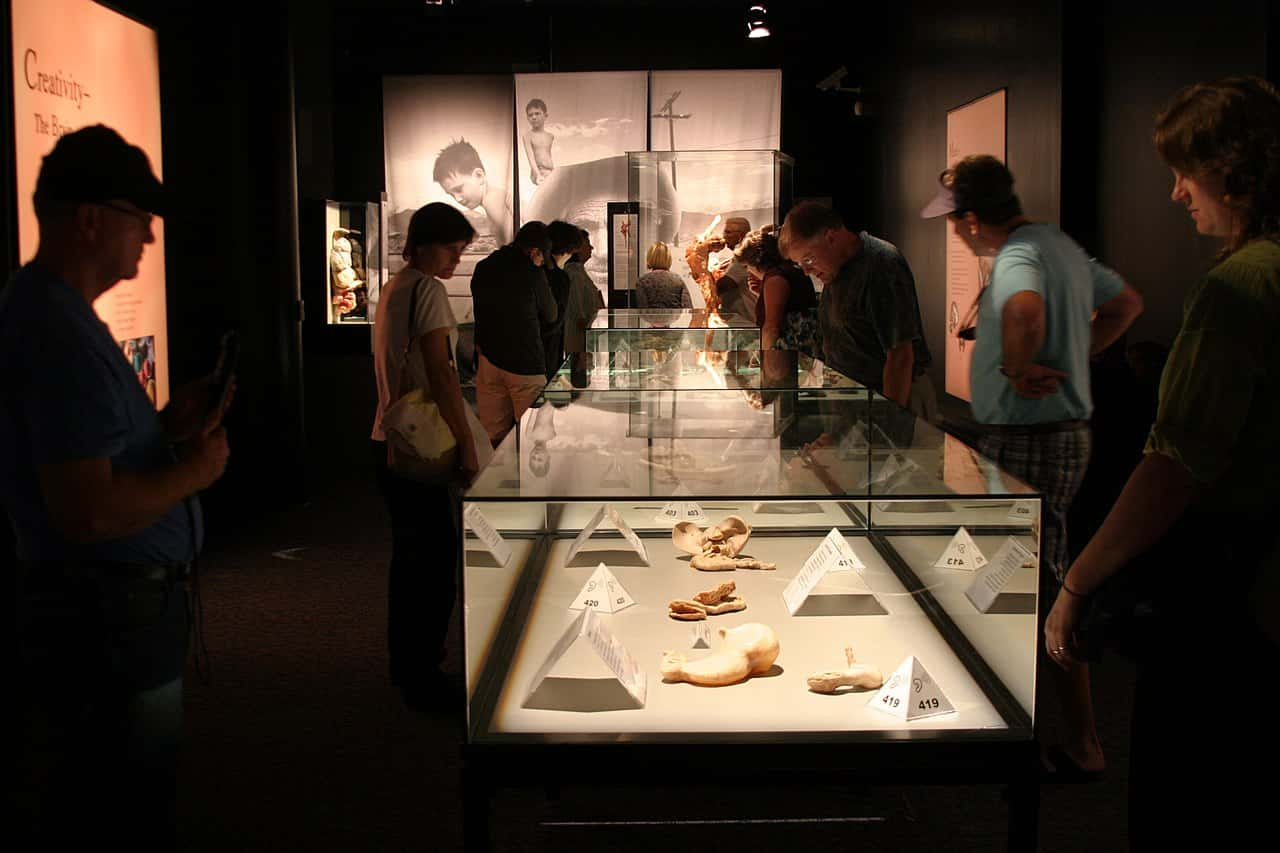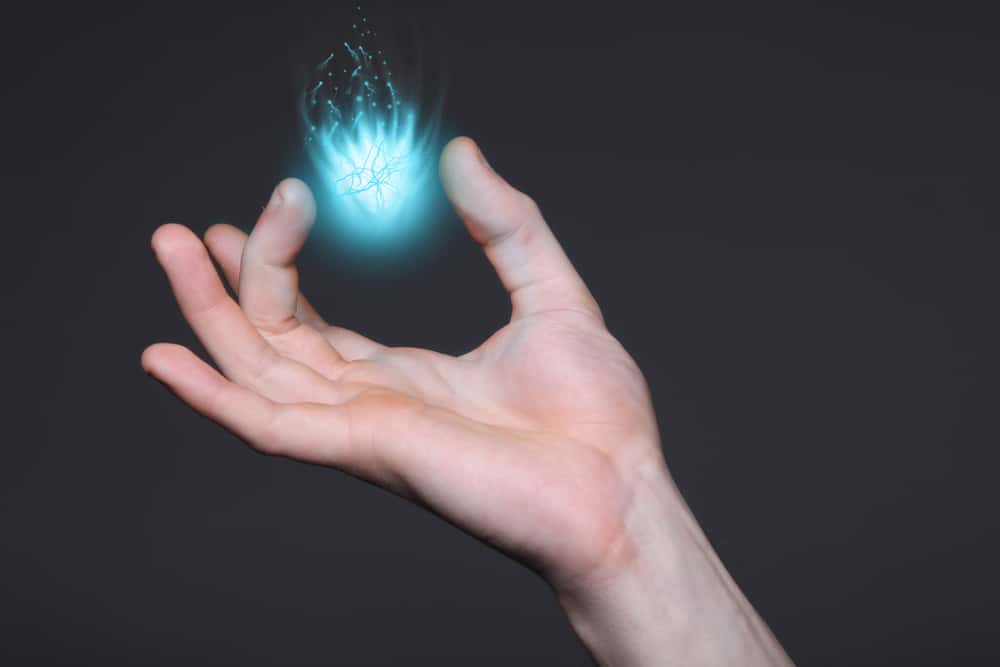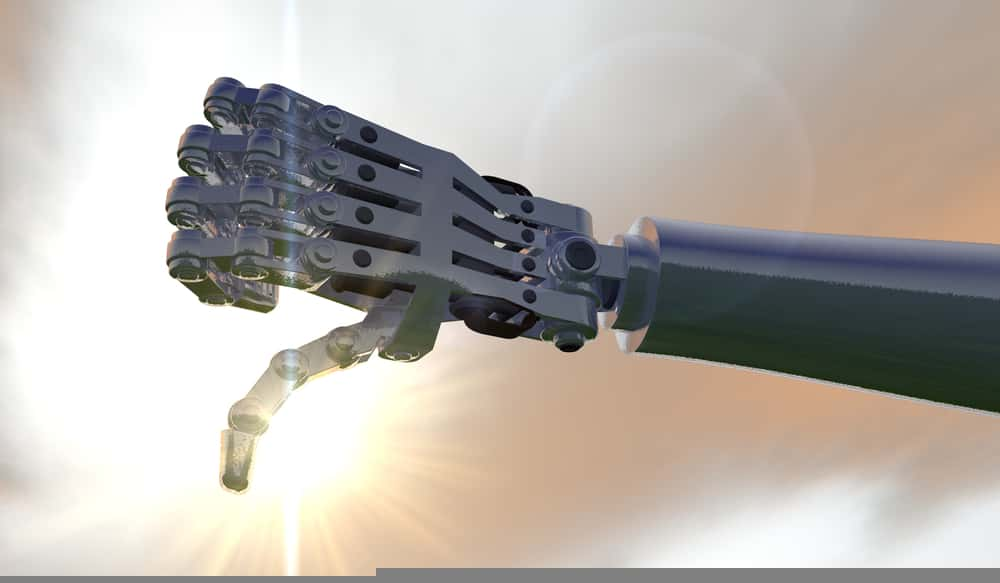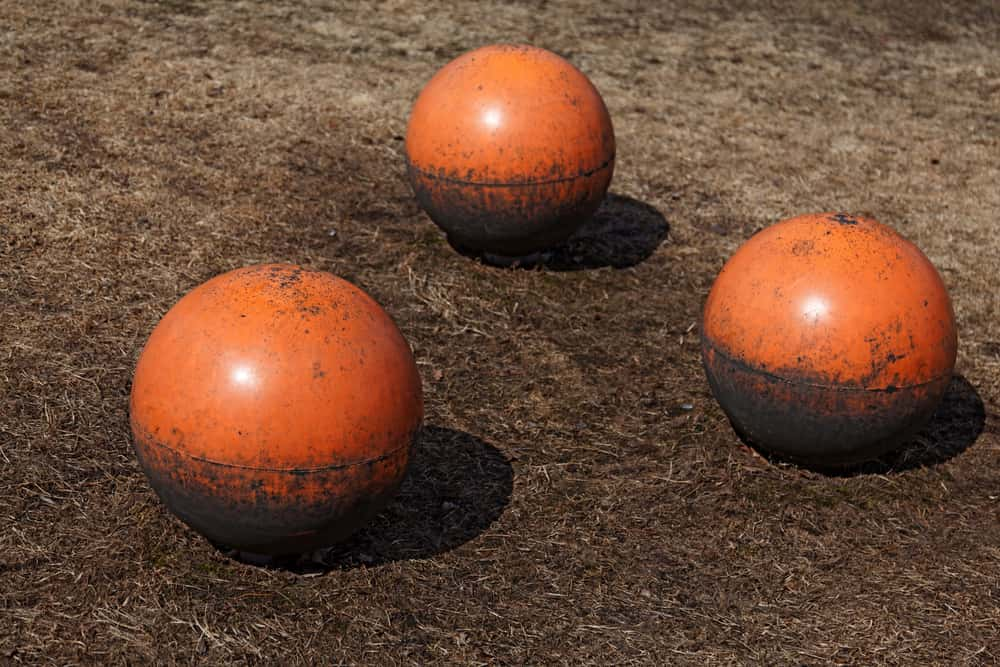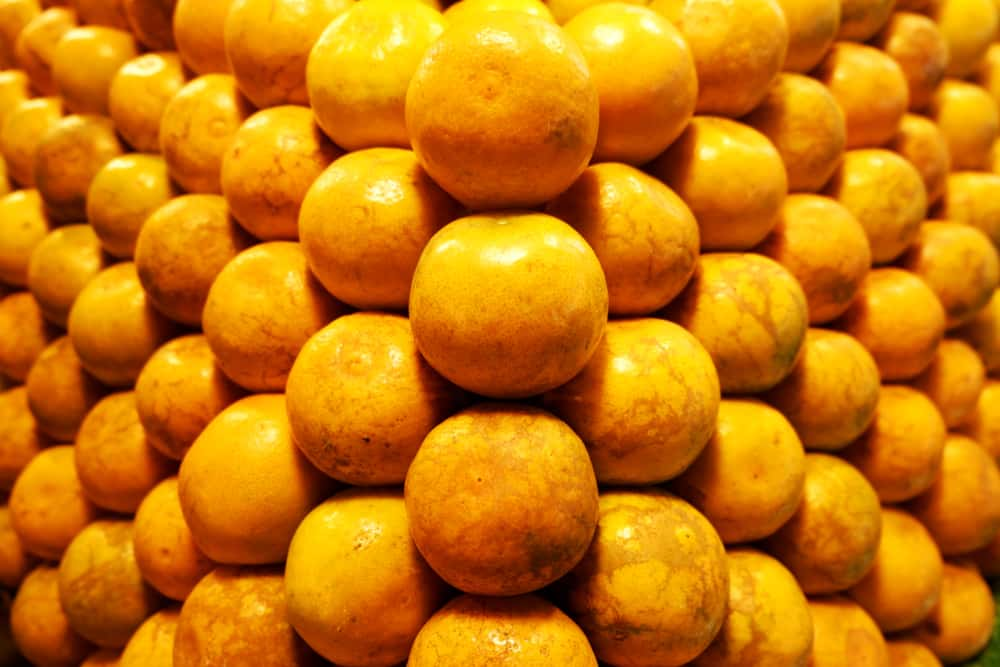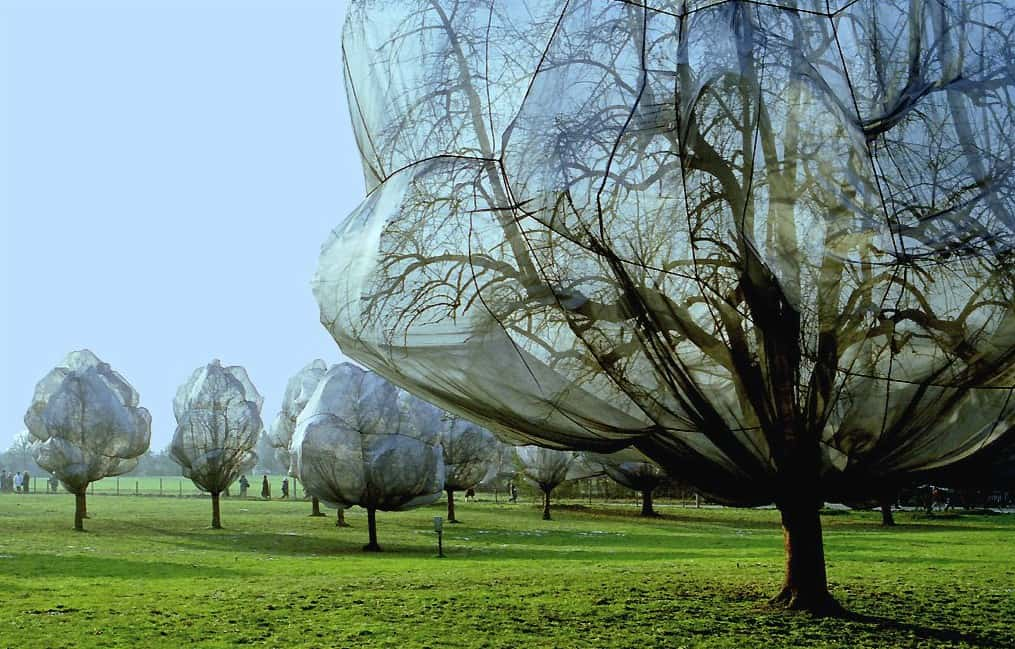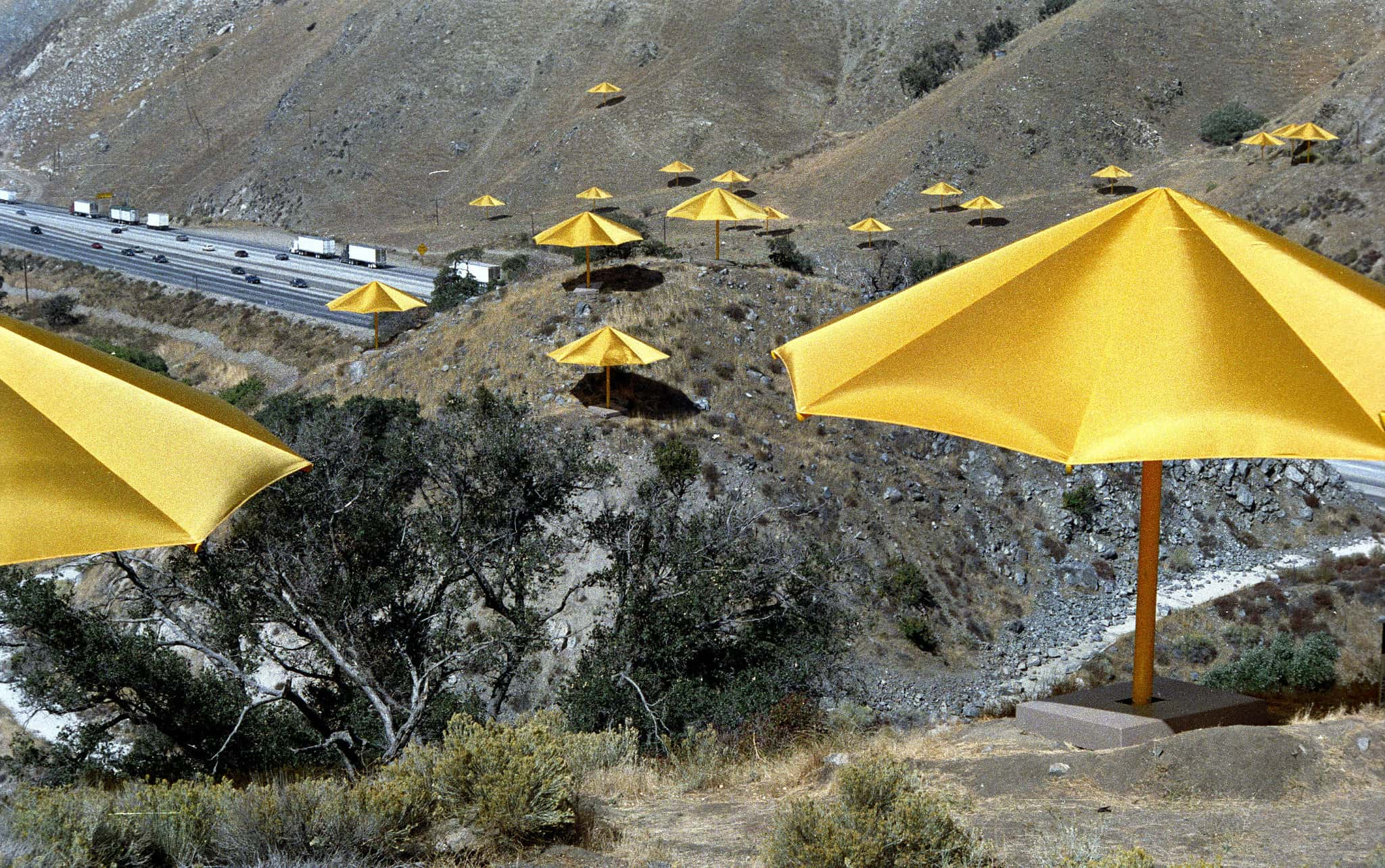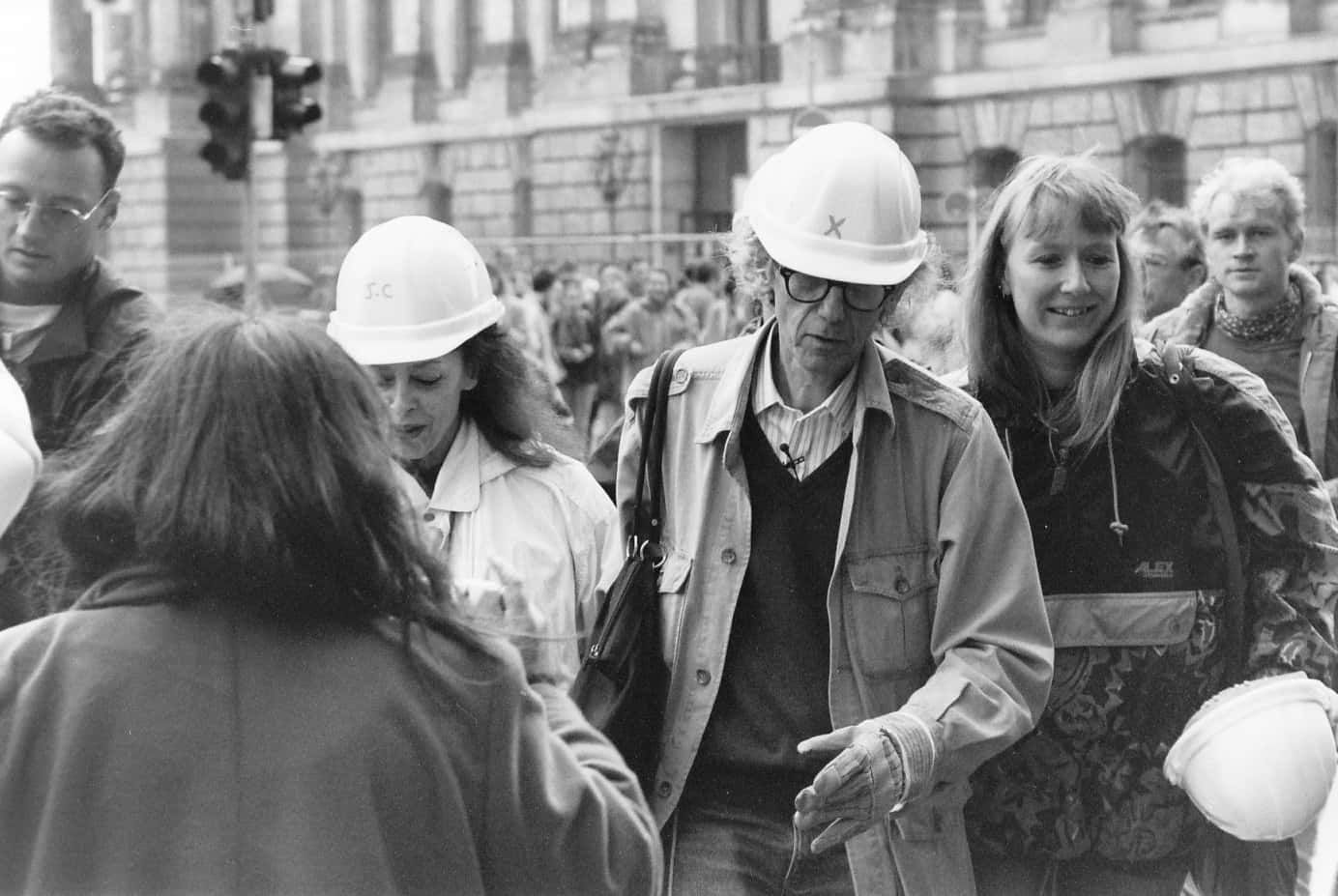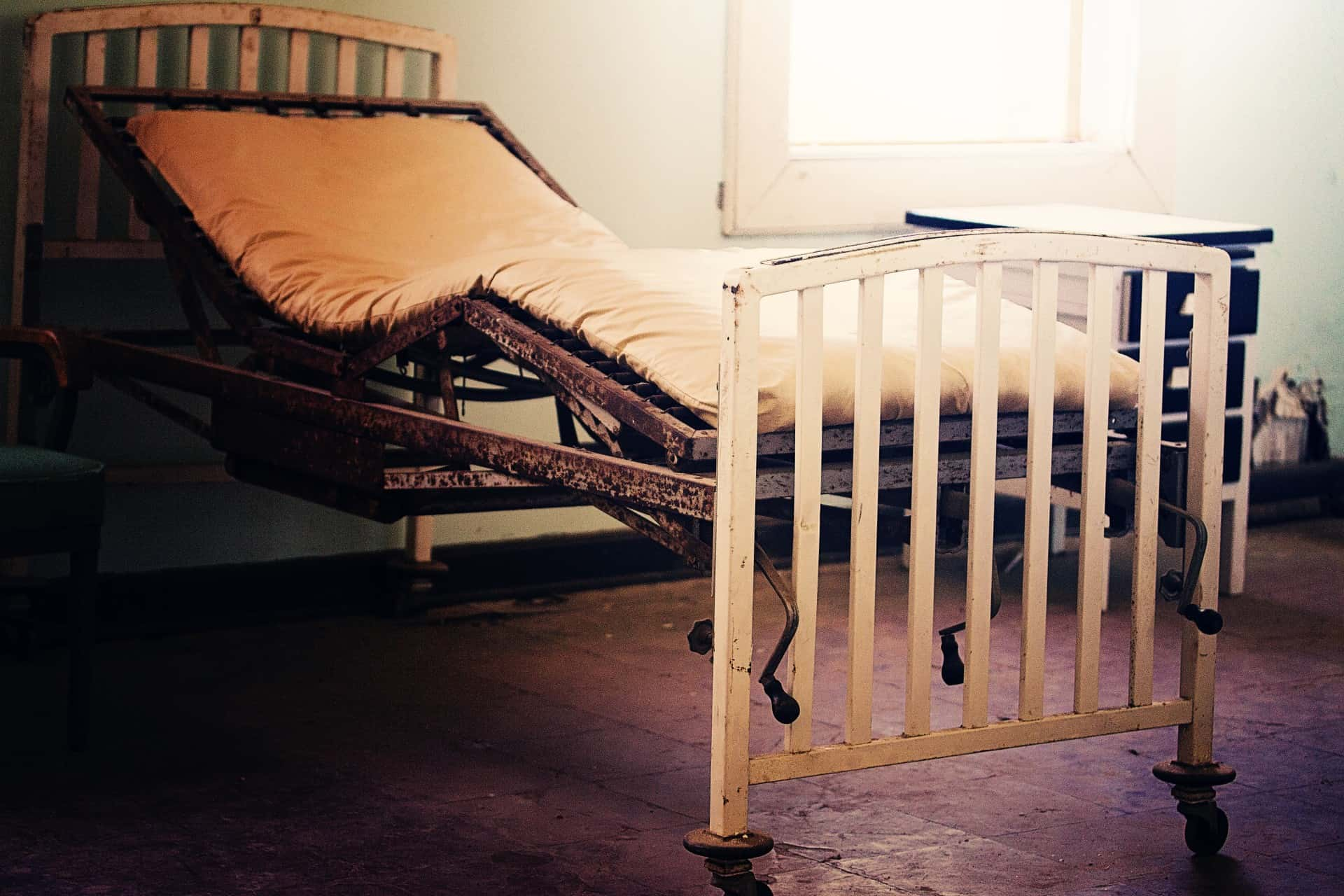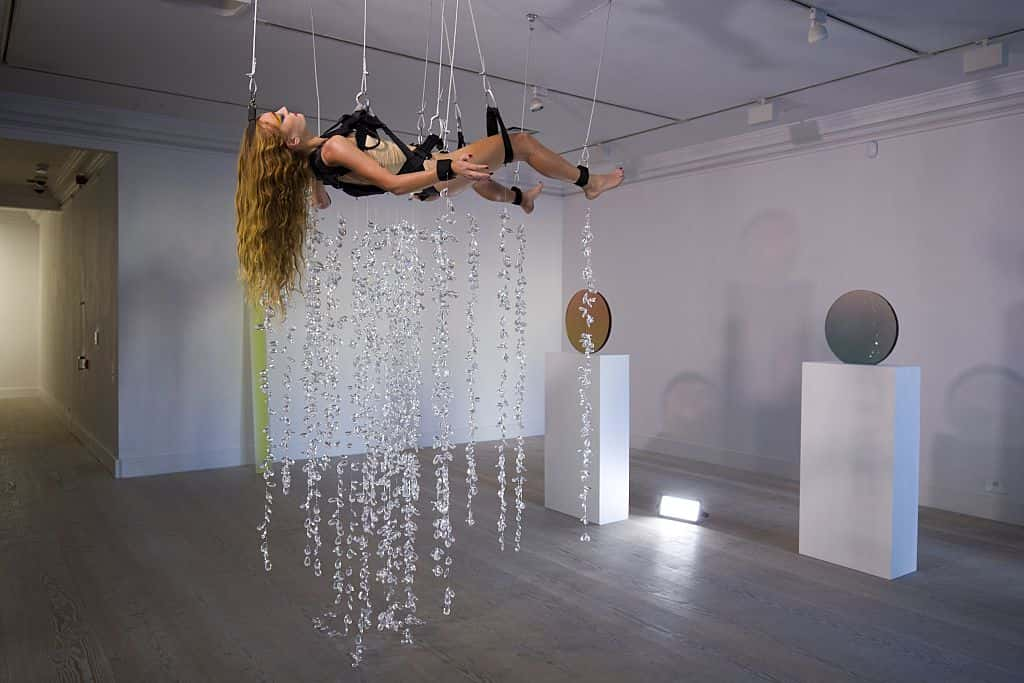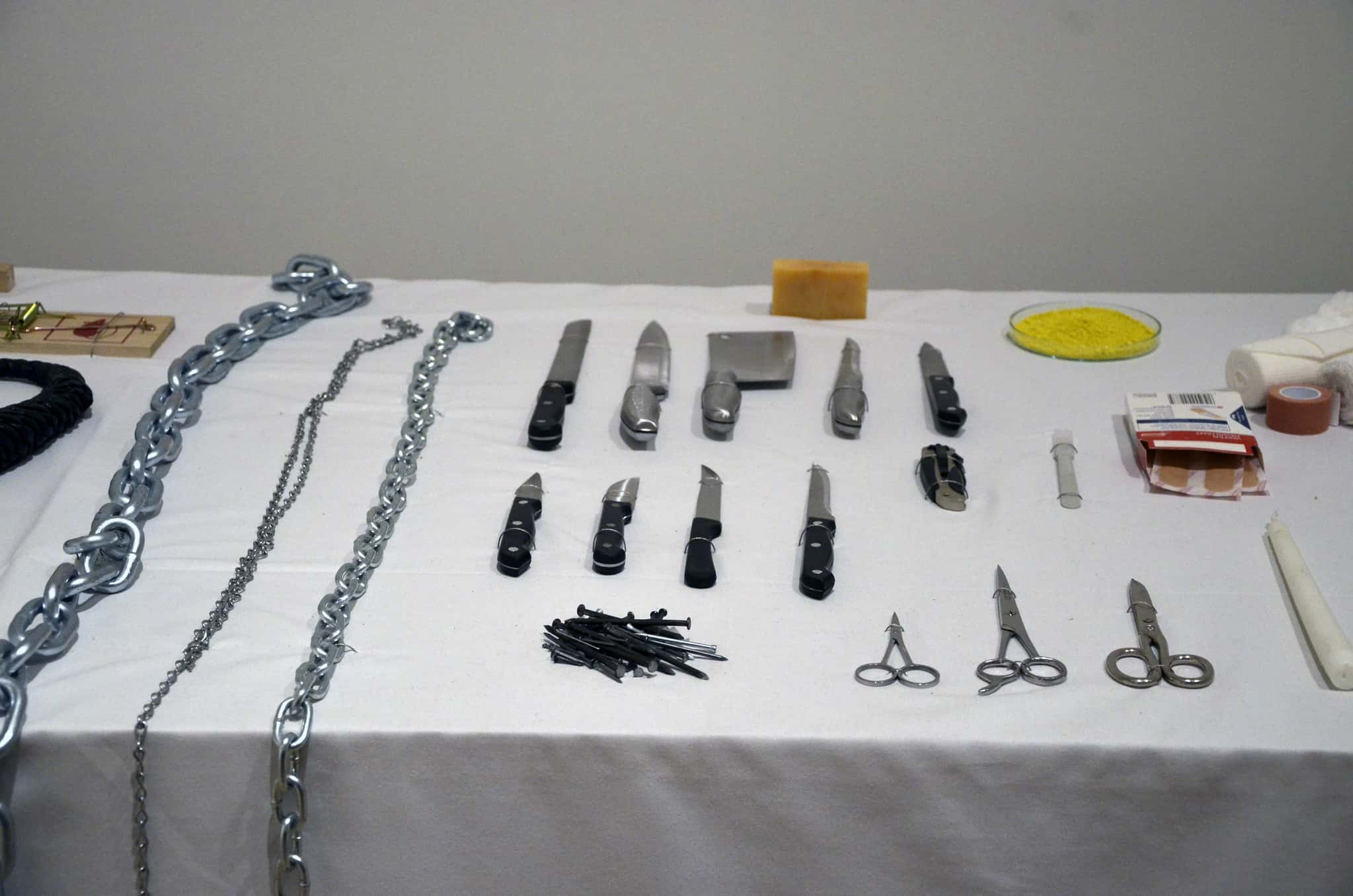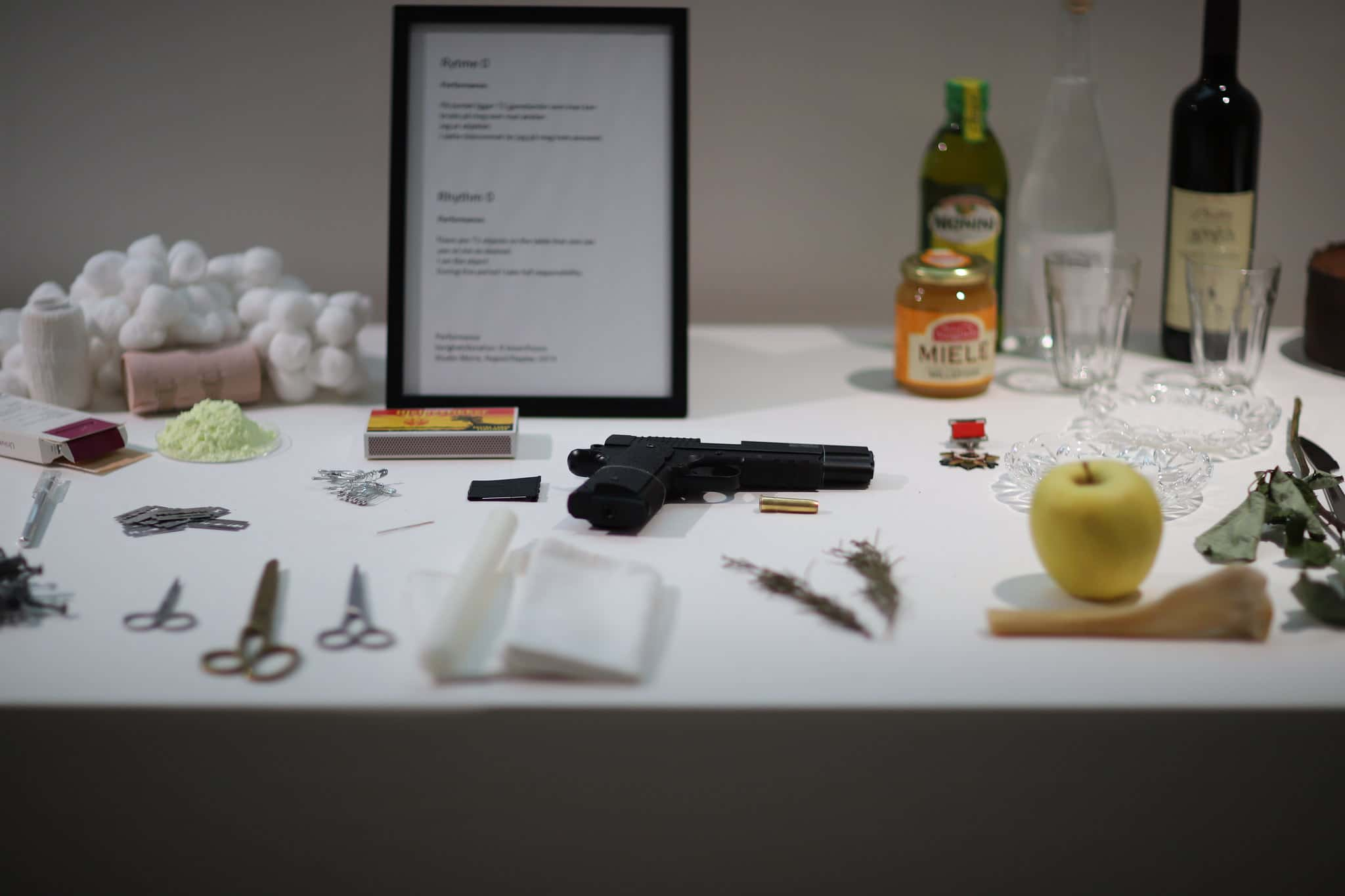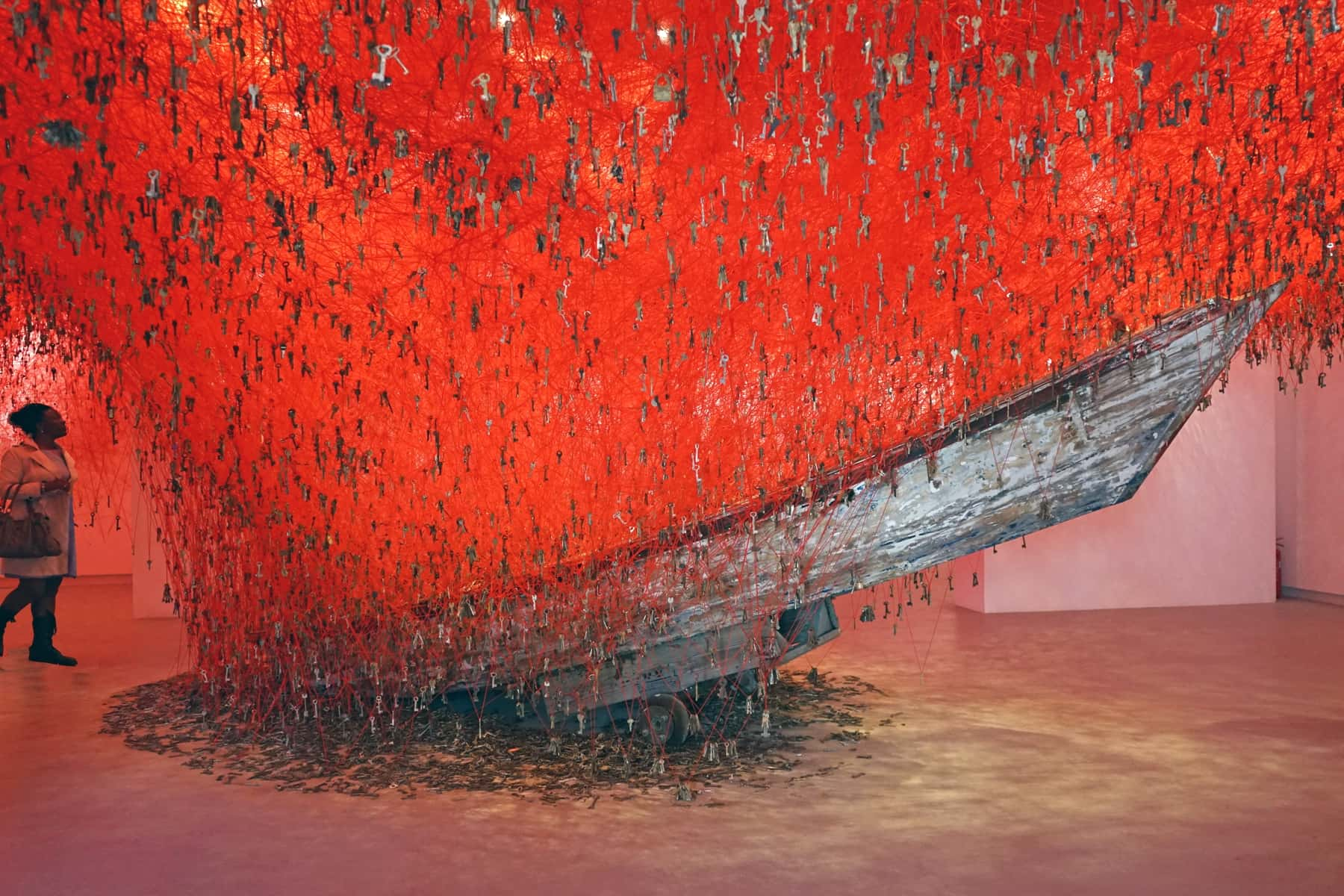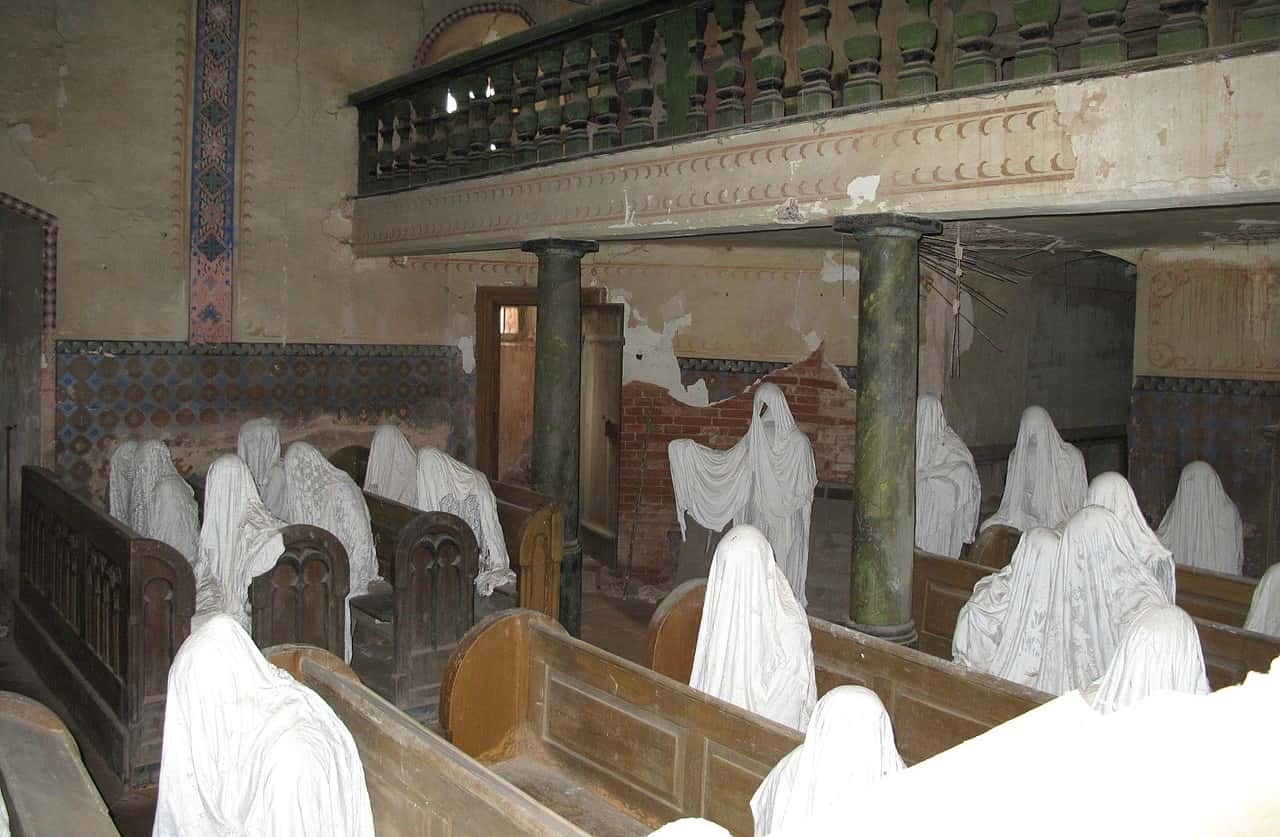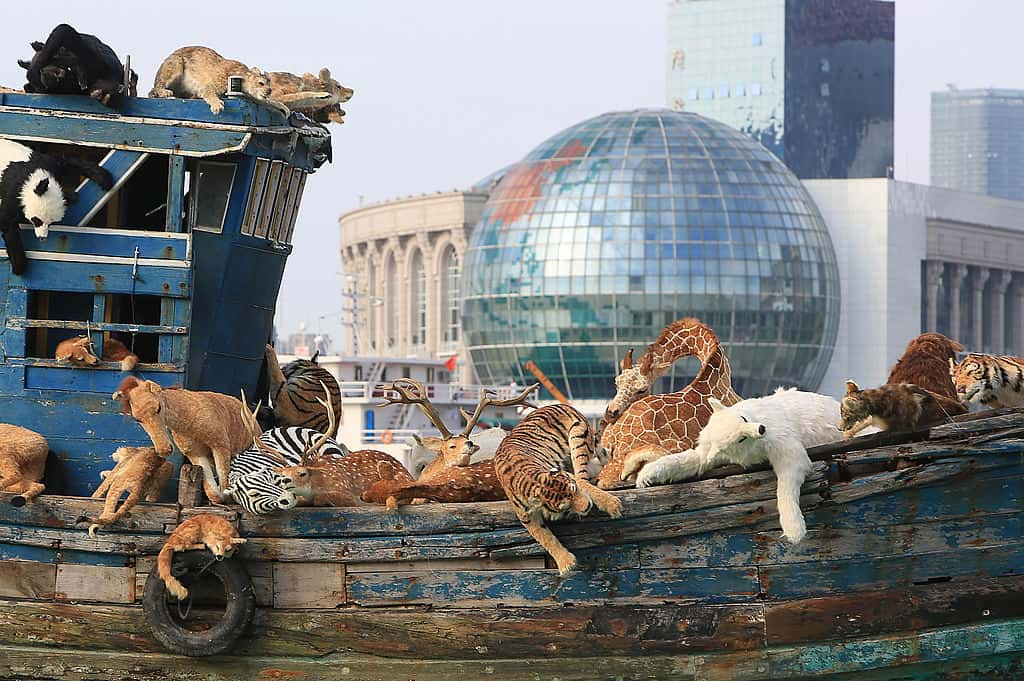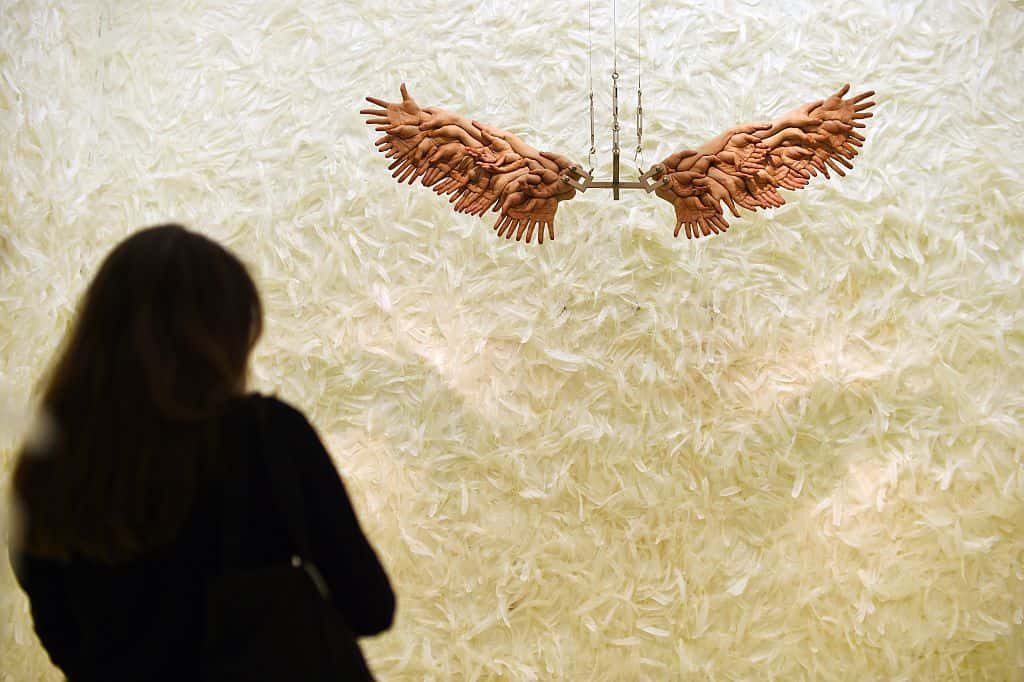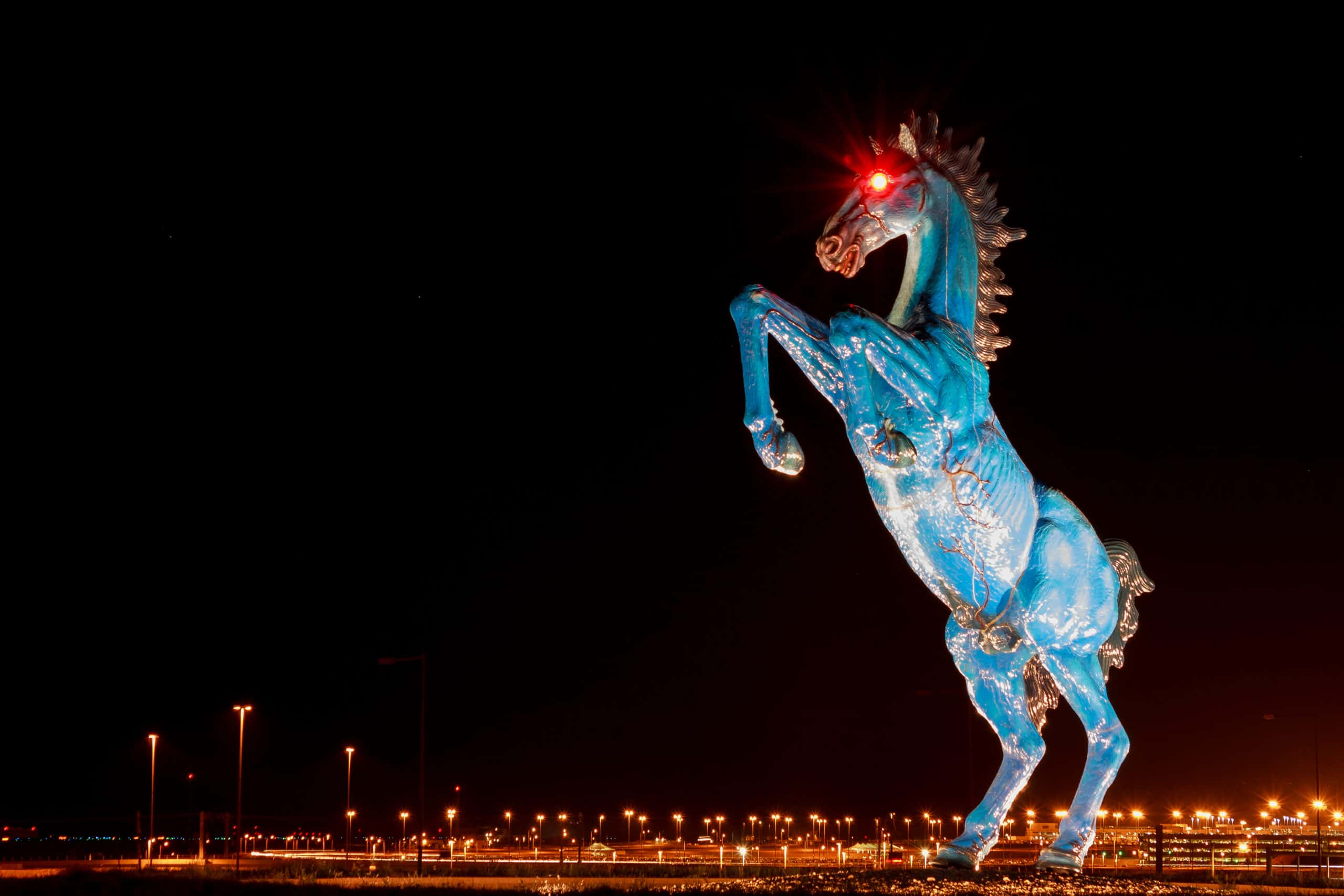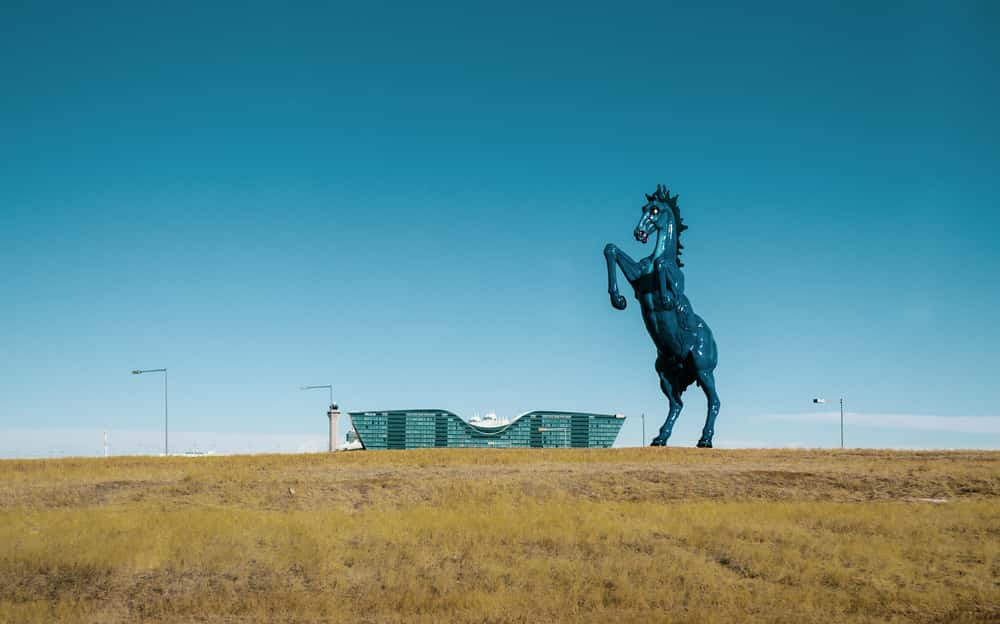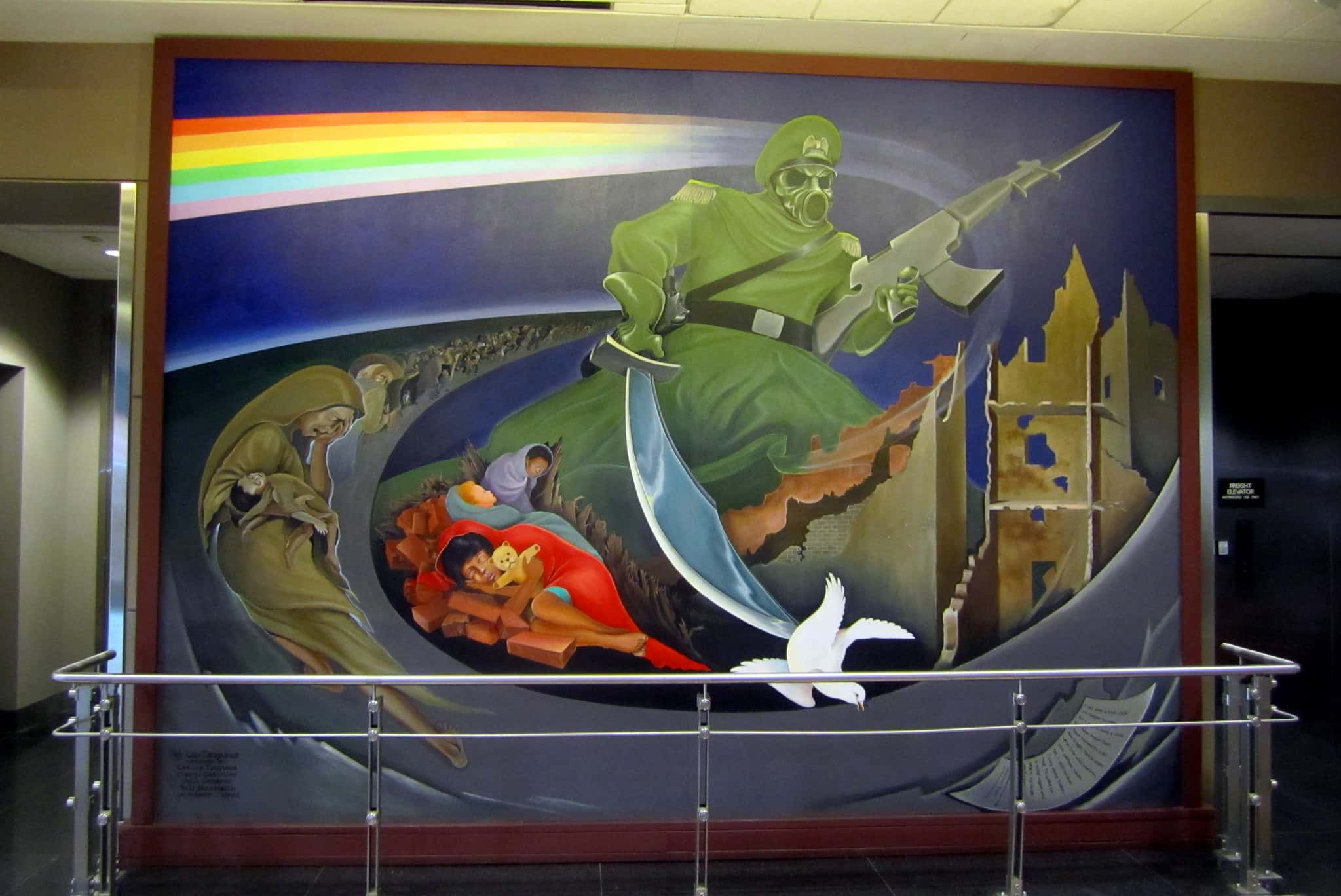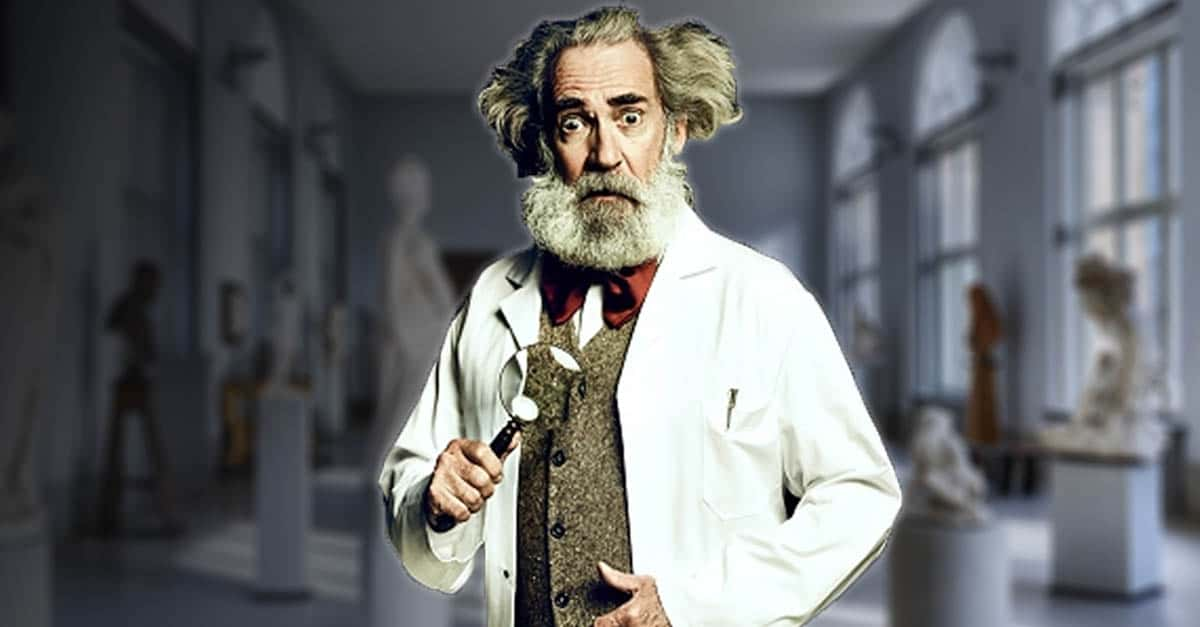Nothing quite lifts the spirit like art. Who can resist the beauty of a good still life, a well-wrought sculpture, or a 90-foot spider web coming to devour you and everyone you hold dear. Ok, that last one might be a bit of a stretch, but it’s true: people are just as drawn to the morbid and bizarre side of human nature as they are to divine beauty. Thankfully, there are enough morbid and bizarre artists to meet that demand. Here are 42 facts about creepy art installations.
Creepy Art Installations Facts
42. I Call It: Attack of the Giant Ants
Do creepy critters make your skin crawl? Then you might want to stay away from Colombia—that’s where sculptor Rafael Gómezbarros has covered dozens of historical government buildings with swarms of giant, life-like fiberglass ants. Gómezbarros calls the project Casa Tomada, which he says is meant to draw attention to the displacement of poor people in the country, but it just reminds me of a bad drive-in movie.
41. Sticky Situation
Not to be outdone, the art collective "Numen / For Use" constructed a series of massive cobwebs at locations around Vienna. The Tape Vienna installations can catch more than flies, however: the massive structures, made entirely from packing tape, are meant to be crawled into and explored.
40. No Shortage of Supplies
If you’re in the process of moving and can’t find your tape, maybe check in with the folks at Numen / For Use. The Tape Vienna installation at the Vienna Odeon took ten people two days to build, and used more than 100,000 feet of packing tape.
39. Aww Crap
Paul McCarthy labored for years on his masterpiece, a thought-provoking installation which asked and answered some of the most important questions about the human experience... Just kidding, it was actually a massive inflatable dog turd called Complex Sh**. When McCarthy displayed his piece at the Paul Klee Centre, the artwork took on a life of its own—high winds took the house-sized pile of crap and flung it across a field, where it tore down some power lines before finally landing in the yard of a children's home. I'm sure that didn't cause any horrible nightmares.
38. Optical Illusions
We’ve all seen those hyper-realistic, 3D sidewalk drawings that make the rounds online. Many seem so life-like they practically jump out of the street, but few are as terrifying as Erik Johansson’s piece, where he rolled out a giant carpet that seemed to make a massive sinkhole appear in the middle of Sergels torg in Stockholm, Sweden. Johansson recorded people's reactions for his blog: just watching pedestrians tip-toe across the 100-foot wide hole is enough to make your stomach drop.
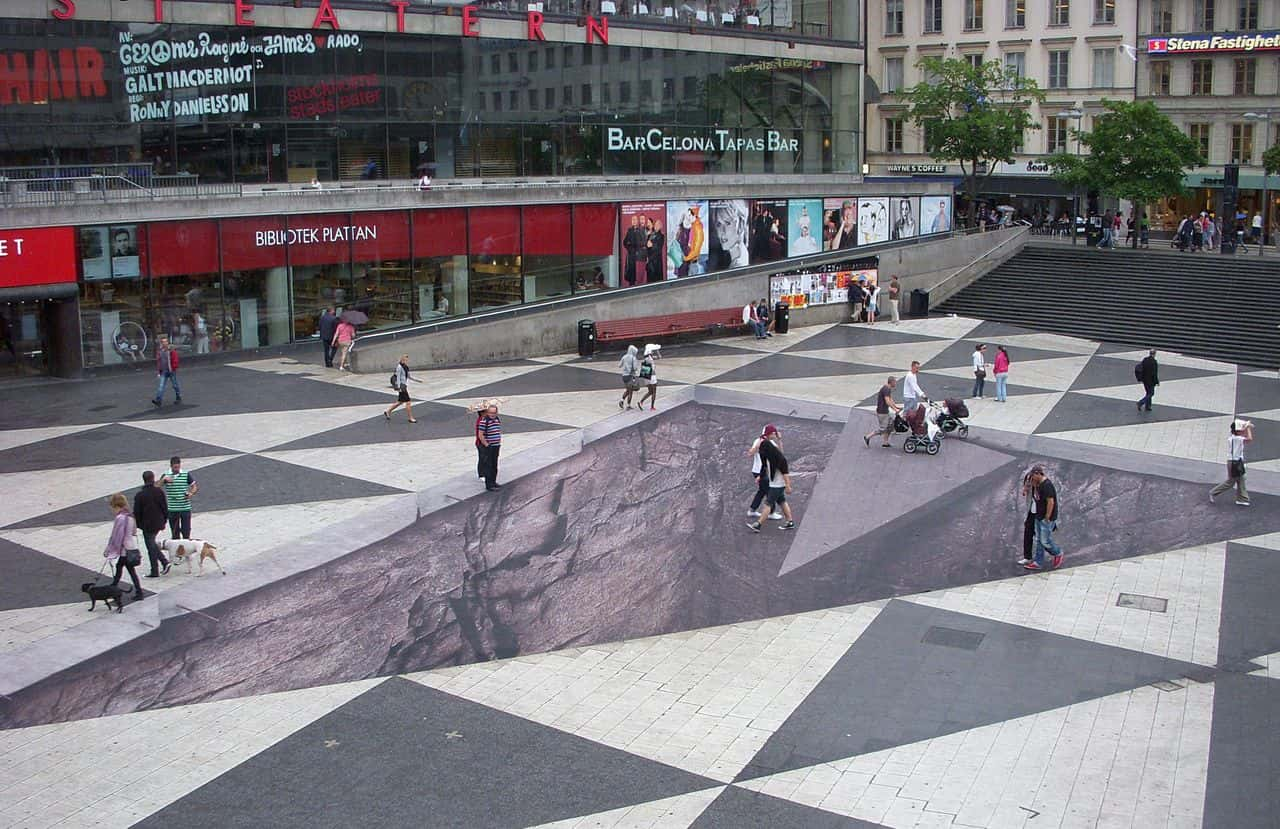 Wikimedia Commons, Holger.Ellgaard
Wikimedia Commons, Holger.Ellgaard
37. A Little Flat
Even if you’ve never been to Sweden, you’ve probably seen Johansson’s work before. His “impossible photography” tends to get shared on social media, including his mind-bending photo of a man ironing himself.
36. Music to Our Eyes
Well, gramps, you’ve finally done it: you’ve updated your music collection and gone digital. But what to do with all your old CDs? Well, you could do like Elise Morin and Clémence Eliard: these two artists used more than 65,000 compact discs to create a bubbly silver seascape on the surface of a Paris street.
35. 10-4, Good Buddy
Eighteen-wheelers are considerably harder to recycle than CDs, but Mike Ross seems to have no trouble. His piece, Big Rig Jig, fuses two of the transport trucks together to make a twisty-turny observation tower. Commissioned by the organizers of the Burning Man festival, it has since been moved to Oakland, California.
34. Going Whole Hog
At some point in your life, your parents probably said that your bedroom “looks like a pigsty!” For Miru Kim, that might be an improvement. In an effort to explore and comment on her struggle with obsessive-compulsive disorder, Kim spent 104 hours, completely naked, eating and sleeping with literal pigs in the front window of a Miami Art Gallery. Kim says the smell was very hard to deal with, and had a hard time getting it off her skin. She called the exhibit I Like Pigs and Pigs Like Me.

Sign up to our newsletter.
History’s most fascinating stories and darkest secrets, delivered to your inbox daily. Making distraction rewarding since 2017.
33. The Holy Trinity Lucifer
The managers of the Holy Trinity Church, a church-turned-shopping center in Marylebone, England, must have raised a few eyebrows when Paul Fryer unveiled his sculpture there in 2008. Lucifer (Morning Star) depicts a Smeagol-esque demon with oily wings tangled up in telephone wires. It looks more like something from the Upside-Down than an inspiring piece of religious art.
32. Going Ape
Lucifer (Morning Star) was just part of a larger exhibit on display at the former church. The following year, Holy Trinity hosted more of Fryer’s work, including a coal-black Jesus Christ seated in an electric chair, and taxidermied gorilla nailed to a cross.
31. Disturbing the Peace
Mark Jenkins is an American artist who specializes in macabre street-art installations. His sculptures often appear to be drowning or lying dead on the sidewalk. In 2009, one of Jenkins sculptures—a man suspended from a tree in a kind of plastic cocoon—shocked and frightened the unsuspecting residents of Winston-Salem, North Carolina. Not long after the sculpture was installed, police arrived at the scene and removed it.
30. Life in Plastic
At least Jenkins’ freaky figures are sculptures. Potential mad scientist Gunther von Hagens puts real human bodies on display through his “plastination” process. In 1977, von Hagens devised a process that would replace the water and fat in a human body with plastic, effectively creating sculptures from once-living people. His Body Worlds exhibits, featuring skinless ex-humans in all kinds of poses, have been shown all over the world.
29. Different Strokes
Von Hagens has been displaying his “creations” since 1995. While his work often raises ethical concerns and has inspired several protests—not to mention plenty of people just plain squicked out by the sight of skinless, bisected humans—all of von Hagens’s….materials have been donated by willing volunteers. More than 9,000 people have signed up to undergo the plastination process upon their death.
28. The Parasite
To demonstrate the shift in human interaction with technology from “user” to “used,” artists Robert Kovac and Pedro Lopez created Ad-infinitum. Ad-infinitum is a machine that runs on human kinetic energy, and it gets that energy by shocking whoever is using it if they do not turn a crank. The machine does not release the “user” until another human accepts the original user’s place. It’s a neat idea, but we’re pretty sure this is how the robot uprising starts.
27. Robot Apocalypse
Speaking of robots, the 2010 installation/performance piece Zwischenräume by Petra Gemeinböck and Rob Saunders features a team of autonomous robots embedded in the wall of an art gallery. Over the course of a few weeks, the robots cooperate—or plot—with each other to break through the wall and confront the human beings on the outside. Seriously, this is a message to all the conceptual artists out there: stop tempting fate.
26. Boxing Match
Motorists in Córdoba, Argentina, woke up to a big square surprise one morning in 2006: a cardboard giant climbing over a bridge on Bulevar San Juan. The figure, constructed of cardboard boxes by Pablo Curutchet, weighed nearly half a tonne. That's a lot of cardboard.
25. Orange You Surprised?
For two and a half years in the 1980s, artist Stuart Williams traveled the world with a set of five inflatable orange balls. He took pictures of the six-foot orange spheres in such notable locations as Central Park and France’s Chateau d’Azay-Le-Rideau.
24. Worthy of the Pharaohs
For more orange-related art hijinks, check out London’s Tate Gallery, where artist Roelof Louw has compiled a pyramid of the sweet citrus fruit. Louw has been repeating the performance since 1967 and invites visitors to help themselves to the healthy pile of snacks.
23. Parts and Labour
The Tate Gallery paid $42,337 for the latest production of Louw's Soul City (Pyramid of Oranges). That works out to about $7 an orange. Can’t help but think your local grocer could’ve done the work for cheaper.
22. Causing a Stink
Norway, home of azure blue fjords and crisp Nordic air, is not the first country you might picture when you think of air pollution. Artist Michael Pinsky is trying to change that: His “pollution pods” recreate the scent and temperature of the air in some of the most polluted cities around the world, including London, Beijing and New Delhi. His hope is by exhibiting these pods in Norway, he can draw attention to just how poor the air quality is in more polluted areas, and just how severe the climate change crisis really is.
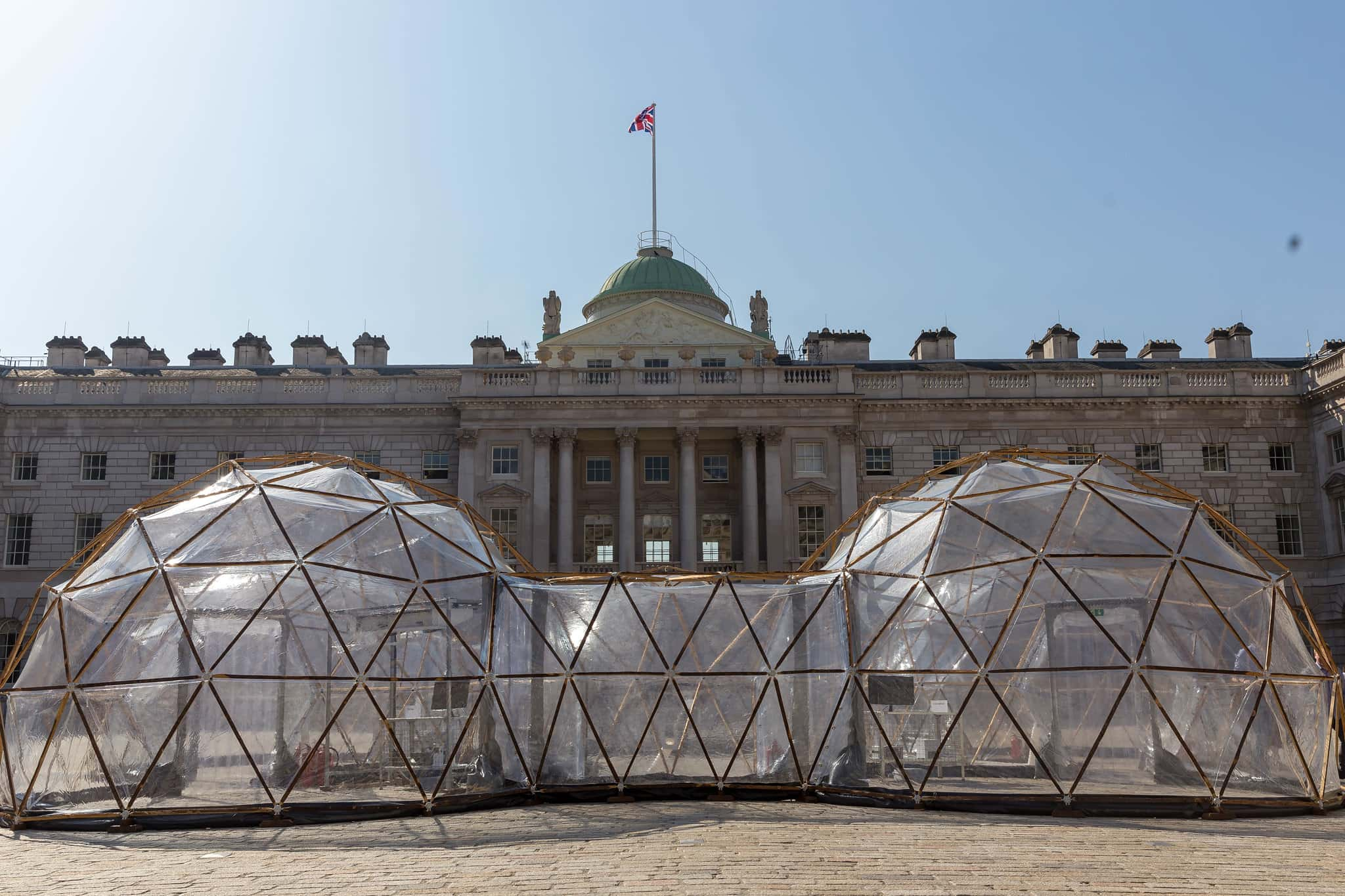 Flickr, Marco Verch
Flickr, Marco Verch
21. Not Subtle
On October 29, 2008—the 79th anniversary of the stock market crash which caused the Great Depression—employees at the New York State Supreme Court building in Manhattan came into work to find the word ECONOMY laid across the front of their building in tall letters made of ice. As the day wore on, the icy letters gradually melted away. Artists Nora Ligorano and Marshall Reese were hoping to bring attention to “our extreme time.” Seems a little on the nose, wouldn’t you say? I guess I shouldn't complain, because I actually think I get this one, and that's not something I can say often.
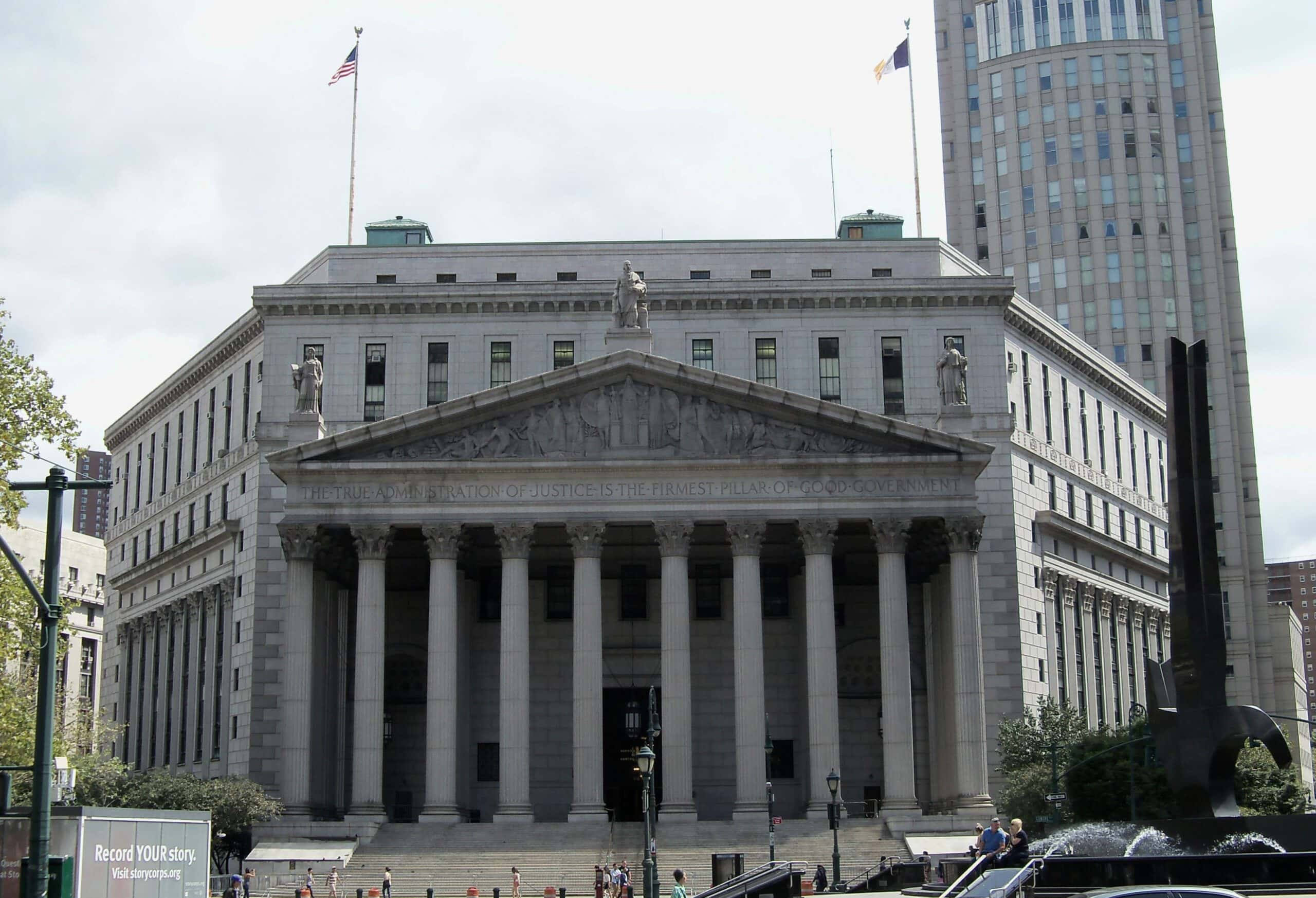 Wikimedia Commons, AlexiusHoratius
Wikimedia Commons, AlexiusHoratius
20. Creative Couple
Two of the most prolific art installers in history were married couple Jeanne-Claude and Christo. The fabric-obsessed couple covered huge landmasses and monuments in plastic or silk. Among their most famous targets were islands in the Biscayne Bay near Miami, the coast of Little Bay, Australia, and Berlin's Reichstag. Not the Reichstag!
19. Credit Where Credit is Due
Though both were responsible for the works, only Christo was credited until 1994 and is still today the more famous of the two.
 Wikimedia Commons, Martin Dürrschnabel
Wikimedia Commons, Martin Dürrschnabel
18. Rain on the Parade
In 1991, Jeanne-Claude and Christo launched one of their biggest projects to date: In Japan, 1,340 yellow umbrellas would be opened, followed by 1,760 blue umbrellas in California. The pair had planned to take the umbrellas down, restore the land, and recycle all components of the display at the end of the month, but a woman was struck and killed when the wind took one of the umbrellas, and the display was ordered to be taken down immediately.
17. From Bad to Worse
During the removal of the blue and yellow umbrellas, a worker was killed when a crane he was operating struck a high-voltage line.
16. Costly Creation
Jeanne-Claude and Christo refused to accept any kind of sponsorship or corporate money for their works. Their tragic blue and yellow umbrella piece cost them $26 million of their own money.
15. Hospital of Horrors
Few places are creepier than an abandoned hospital. A once-bustling building, the site of so much sickness and death, and now…pin-drop quiet. Shudder. But how about abandoned hospital full of terrifying art by some of the world’s most provocative visual artists? In 2016, the former Los Angeles Metropolitan Medical Center played host to works by Robert Mapplethorpe, Jenny Holzer, and Marilyn Minter as part of the “Human Conditions” exhibit.
14. Human Conditions
Works on display at “Human Conditions” included a bathtub full of pigs’ blood, some truly grotesque sculptures and a granite bench engraved with the phrase “What a shock when they tell you it won’t hurt and you almost turn inside out when they begin.” But perhaps most shocking was Millie Brown’s (not the girl from Stranger Things, that's Millie Bobby Brown) piece Body Rainbow, in which she suspended herself from the ceiling in what was once the hospital’s morgue.
13. Rhythm 0
In 1974, Yugoslavian artist Marina Abramović made headlines when she staged Rhythm 0, a performance art piece in which she simply stood on a stage. Beside her was a table with 72 items on it. Visitors were invited to do anything they wanted to her using one of the 72 items.
12. Committed to the Act
“She was so committed to the piece that she would not have resisted rape or murder,” wrote one art critic. During the exhibit, Abramović did indeed endure several of what she later called “minor sexual assaults.” Still, she refused to respond.
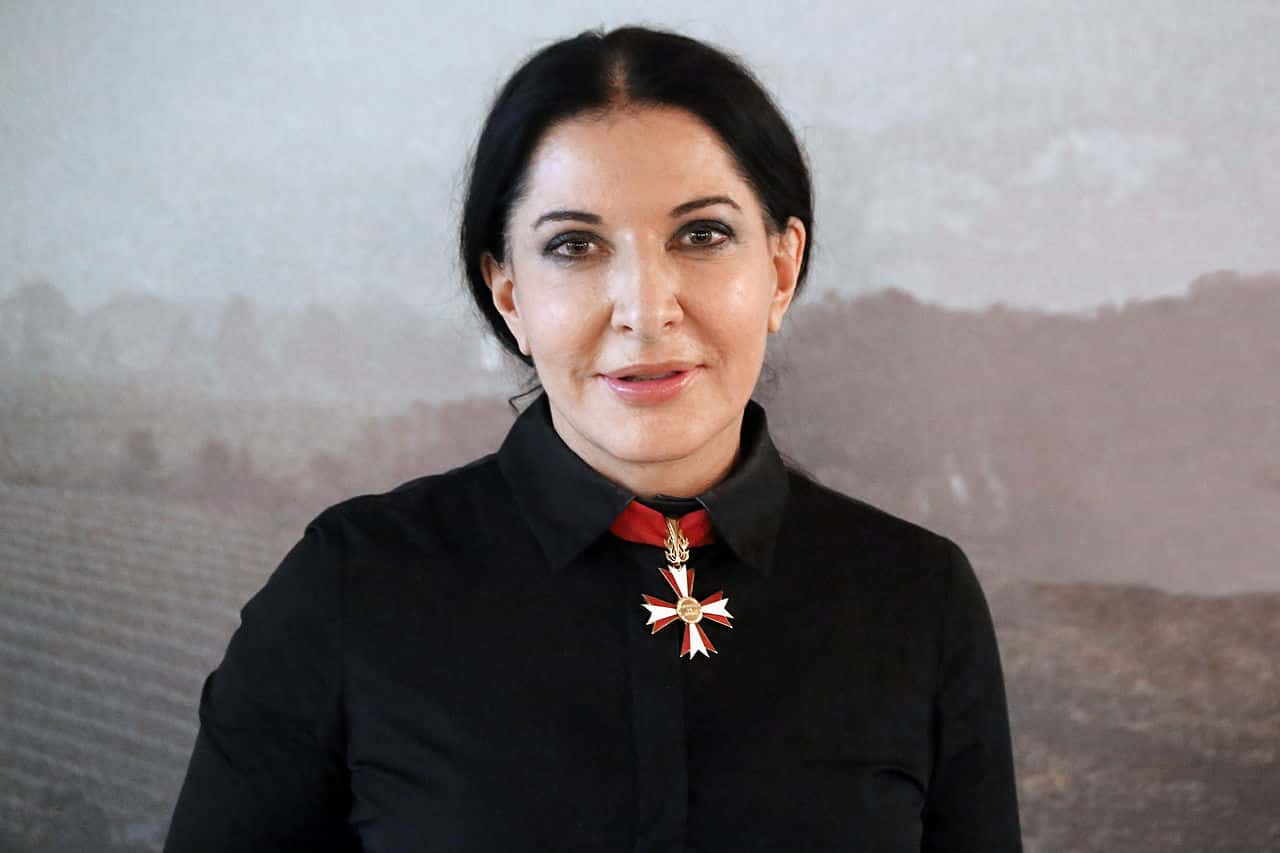 Wikimedia Commons, Manfred Werner / Tsui
Wikimedia Commons, Manfred Werner / Tsui
11. Nerves of Steel
The 72 items used in Rhythm 0 included a bunch of grapes, a feather, scissors, and even a gun loaded with a single bullet. One visitor actually held the gun to Abramović’s head until another slowly pulled the man away.
10. No Bones About It
Abramović’s 1995 piece Cleaning the Mirror kept her separate from any living, breathing audience. Instead, she videotaped herself methodically cleaning a human skeleton. Five monitors simultaneously played five videos focused on different parts of the skeleton, with the sound of the scrubbing creating a creepy ambience.
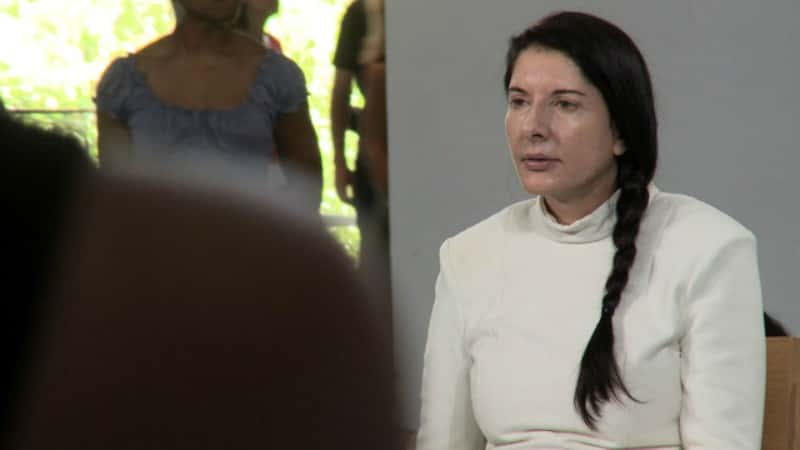 Wikimedia Commons, Christian Görmer
Wikimedia Commons, Christian Görmer
9. Tangled Webs
Japanese artist Chiharu Shiota (who studied under Abramović) creates room-covering webs of black and blood-red thread, leaving art galleries looking like the lair of a blood-thirsty, man-eating spider. To add to the ick factor, Shiota decorates the webs with human artifacts like keys and chairs, or spreads them over ancient, decrepit boats.
8. The Ghosts
Czech artist [tablet]Put content here that you only want displayed on Tablets NOT Phones or Desktops[/tablet] found the perfect place to store his ghostly shrouded sculptures—a legit haunted Czech church. The church, which was abandoned in 1968 after the roof collapsed in the middle of mass, now houses more than a dozen of Hadrava’s white, shrouded figures. Just so long as they don’t move...
7. Ark
Chinese artist Cai Guo-Qiang had a fitting response to news that 16,000 dead and diseased pigs had been thrown in the Huangpu River. He loaded a dilapidated fishing boat with dozens of stuffed animals and sent it drifting down the waterway.
6. In the Flesh
Korean artist Choi Xooang specializes in incredibly life-like resin sculptures—his humans look so real they might speak. That’s a little unnerving when his art pieces include wreaths of human heads on meathooks, or massive wings made up of human hands.
5. Weirder Homes and Gardens
Artists Dan Havel and Dean Ruck are not your usual house-flippers. Sure, they’ll demolish the inside of a house and turn it into something special, but they're not getting the house ready to sell to a happy family. Instead, the leave the domiciles looking more like a black hole or a portal to another dimension. Havel and Ruck’s Inversion project sees them traveling to cities around America and briefly turning abandoned homes into temporary, breathtaking art pieces.
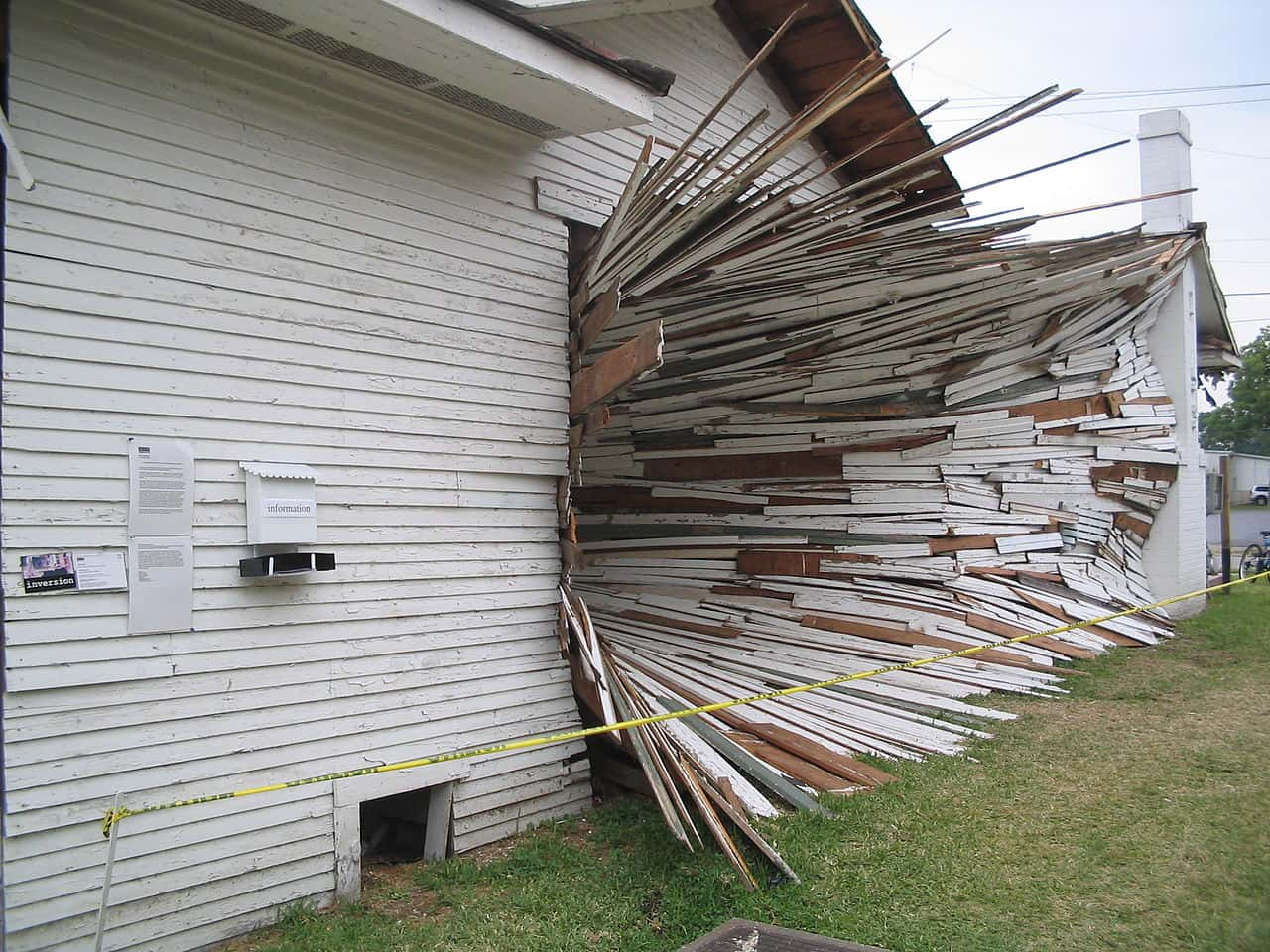 Wikimedia Commons, Nick Douglas
Wikimedia Commons, Nick Douglas
4. The Blue Mustang
Flying can be stressful enough, but imagine pulling up to the airport and seeing a 32-foot-tall blue horse with glowing red eyes, rearing up on its hind legs like it's ready to trample your plane. The nightmarish monument, called "Blue Mustang," has earned the nickname “Blucifer” from guests of the Denver International Airport.
3. Blucifer Strikes
On its own, Blucifer is pretty creepy. It gets extremely creepy when you consider that it actually killed its creator. Artist Luis Jiménez died while working on the sculpture when the horse’s head fell and severed an artery in his leg.
2. The Murals
The inside of Denver International isn’t much more relaxing. Despite their titles, Leo Tangamura’s murals Peace and Harmony in Nature and Children of the World Dream of Peace depict terrifying dystopic imagery: masked, machine-gun-bearing soldiers stabbing doves, and forest fires engulfing all kinds of children and woodland creatures. What the hell is going on at the Denver airport?!
1. The Vast Conspiracy
The creepy murals, the demonic horse—these things mark Denver International as a pretty strange place. Some people have even suggested that Denver International might be the hub of a strange Illuminati conspiracy: they argue the airport is shaped (vaguely) like a swastika, and cite a number of symbols in the murals as coded Masonic messages. Most of these messages have an easy explanation: they're misspelled Navajo words, or names of artists who worked on the mural.
Sources: 1, 2, 3, 4, 5, 6, 7, 8, 9, 10, 11, 12, 13, 14, 15, 16, 17, 18, 19, 20, 21, 22, 23, 24


